Astrology– an ancient art and science that delves deep into the connection between celestial movements and human experiences. We all have turned towards astromancy at some point in our lives for varied reasons, but few have understood what our stars are trying to tell us in their entirety. This is what we will explore in this blog through a mix of 37 mystical and hooking aspects.
At Globextra, we always say that learning and technology must work in harmony to build a better and more developed world. This is why we bring you a topic that has its roots in all cultures- Astrology and how it has merged with technology to upgrade itself.
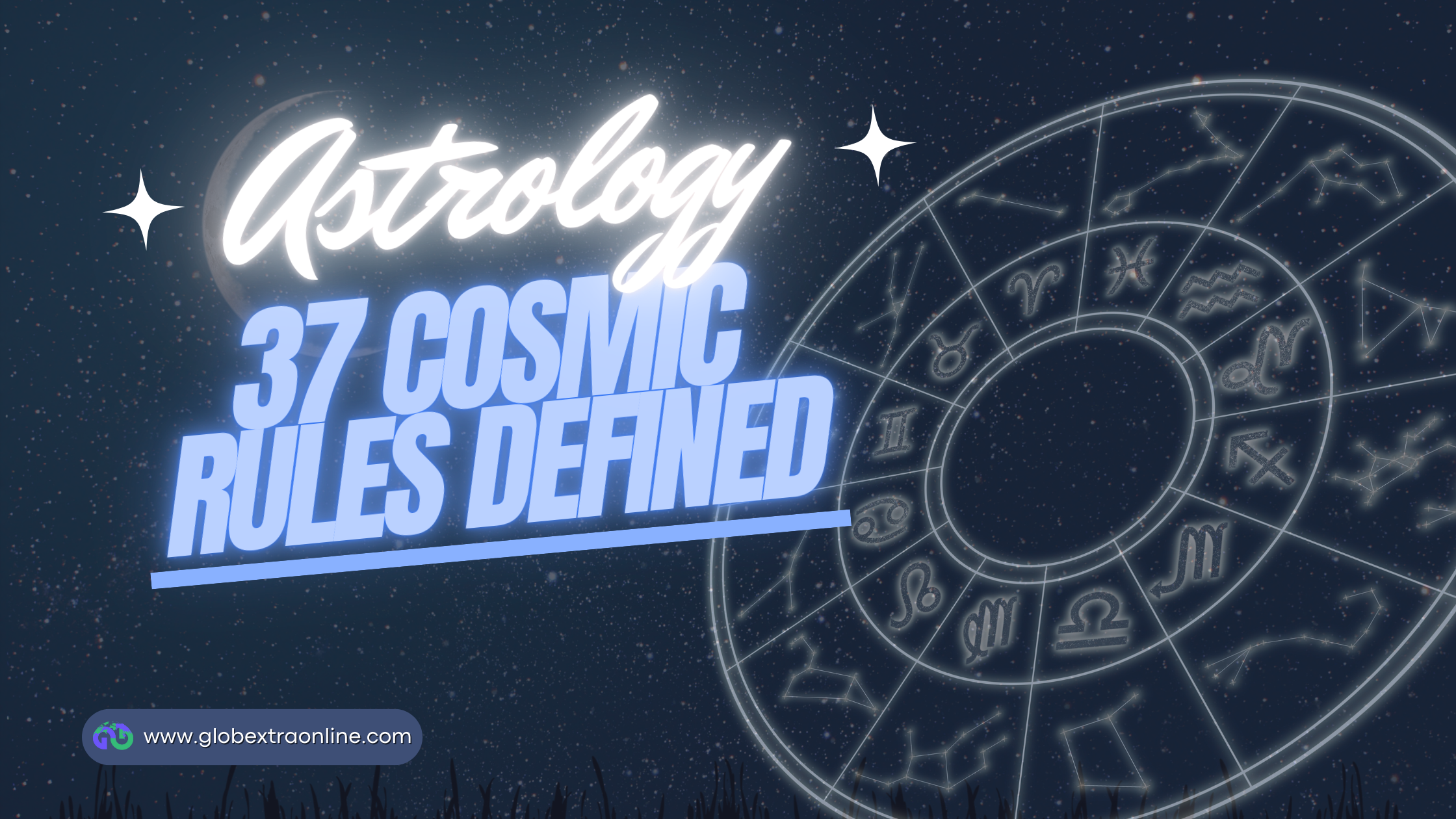
Astrology – 37 Planetary Facts To Help You Decide The Course Of Your Life
For centuries, people across cultures have turned to astrology to uncover hidden truths about themselves and navigate life’s challenges. From understanding your strengths and weaknesses to predicting potential opportunities, astrology continues to guide individuals toward a deeper understanding of self.
However, this divine study is not just about predicting the future—it is a journey into self that helps us feel connected with the universe. In this blog, we’ll explore the timeless wisdom of astrology, dive into its origins, key principles, some surprising ways it continues to shape modern life, and 37 ethereal points of wisdom to make you feel connected to the Power. So, ready to know about them? Let’s unveil a new chapter in our lives today.
1. What Is Astrology- The Term Defined For Better Understanding
Astrology is the study of the movements and positions of celestial bodies—such as planets, stars, the sun, and the moon. This is used to depict how these cosmic bodies affect our lives & nature. This combines the study of divinity with spirituality, symbolism, and science to interpret the connection between the cosmos and life on Earth.
2. Astrology & The Core Belief That It Works Upon
Astrology is known by many names; horoscopy, stargazing, horoscopes & astromancy, crystal gazing, oneiromancy, pyromancy, hydromancy, rhabdomancy, augury, future prediction and some heavenly words to describe it further are- celestial, cosmic, constellation, lunation, transit, ascendant,apotelesm, sidereal, planetary alignment, zodiac, quintessence, etheric, luminary, conjunction, opposition, trines, aspects, and natal chart. So, let us see the key principles it works on in this section.
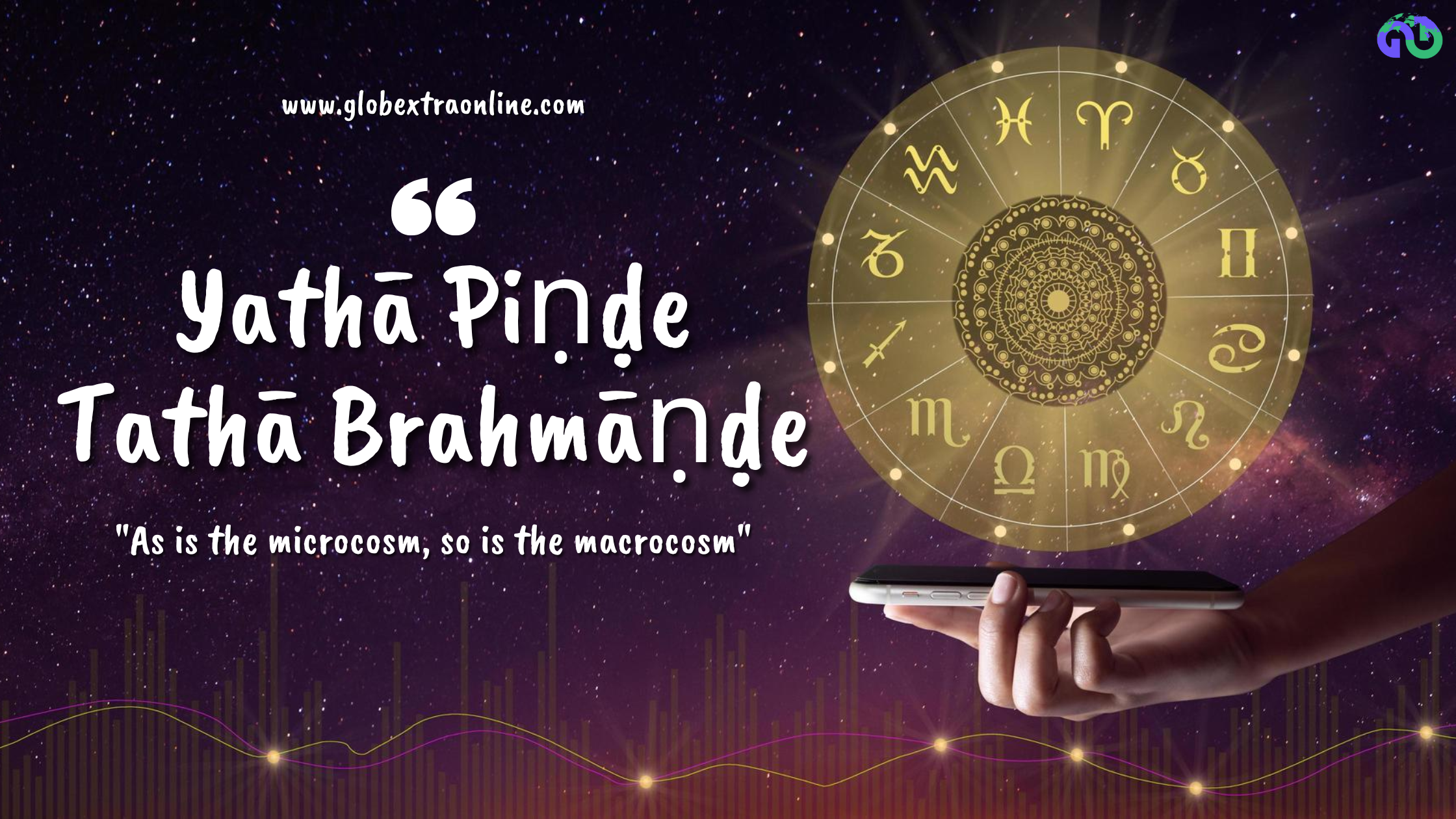
Horoscopy operates on a simple principle and which is यथा पिण्डे तथा ब्रह्माण्डे।”
(Yathā Piṇḍe Tathā Brahmāṇḍe). This translates to “As is the microcosm, so is the macrocosm.”
Simply put this emphasizes the fact that the patterns and alignments in the sky shape the events, emotions, and energies we experience on Earth. The study believes that the universe is interconnected, and celestial phenomena can influence or reflect individual lives, relationships, and even global occurrences.
3. Planetary Science & Why Is It Considered As A Hoax?
Astrology is a divine science that has always helped mankind in various ways. However, due to some underlying factors, people claim that this ancient science as a mere notion. We will learn why this claim is made in this section.
- Lack of scientific evidence.
- The readings are typically vague and open to interpretation which enables people to see connections in places that make no sense.
- Lacks accuracy and is often unable to deliver the desired outcome.
- Varies across cultures and there is no one way to define it
Despite the negative facts, people across races still believe in this celestial science. We will get to know the reasons through its benefits later in the blog.
4. Tantric Astrology & How It Varies From Vedic Astrology?
Tantric and Vedic astrology are two popular types of astromancy but, this is where the similarity ends. To help you understand what sets them apart, we have mentioned them in a table below.
| Aspect | Tantric Astrology | Vedic Astrology |
| Primary Focus | Spiritual growth, self-awareness, and energy alignment | Predicting life events and understanding life patterns |
| Connection with the other | Deeply rooted in Tantra, combining spiritual practices | Based on Vedic scriptures, focusing on cosmic influences |
| Based on chakras and energy | Emphasizes chakra balancing and energy activation | Focuses on planetary positions and their effects |
| Remedies | Rituals, meditation, and mantras for spiritual evolution | Gemstones, rituals, and mantras to mitigate planetary effects |
| Purpose | Liberation and transcendence | Navigating karma and fulfilling life purposes |
| Astrological Chart | Interpreted for spiritual and energetic alignment | Detailed birth charts (Kundali) for life predictions |
| Secret Practices | Incorporates symbolic rituals and meditative practices | Follows traditional calculations and remedial measures |
5. Astrology & Astronomy- How They Differ From Each Other
Let us understand the areas of difference with the help of a table that highlights each aspect.
| Aspect | Astrology | Astronomy |
| Definition | A belief system that interprets the influence of celestial bodies on the lives of humans & events. | A scientific study of celestial objects, space, and the universe on the whole |
| Focus | The symbolic meaning and effects of planetary positions on individuals and society | Understanding the physical properties, movements, and origins of celestial objects |
| Nature | Philosophical, symbolic, and spiritual | Scientific and evidence-based |
| Purpose | Provides insights into human behavior, relationships, and life events based on planetary alignments | To explore and explain the universe’s phenomena through observation and research |
| Methodology | Relies on interpreting birth charts (horoscopes) and celestial positions | Uses mathematical calculations, telescopes, and experiments |
| Tools Used | Birth charts, astrological software, and zodiac systems | Telescopes, satellites, observatories, and computational models |
| Scientific Basis | Lacks empirical evidence and is not considered a science | Strongly rooted in science with verifiable evidence |
| Key Elements | Zodiac signs, planets, houses, and aspects | Planets, stars, galaxies, black holes, and cosmic phenomena |
| Historical Roots | Originated as a spiritual and symbolic practice in ancient civilizations | Emerged from ancient stargazing but evolved into a scientific discipline |
| Acceptance | Often viewed as a pseudoscience by the scientific community | Widely accepted as a legitimate field of science |
| Applications | Personality analysis, predictions, and guidance | Space exploration, understanding cosmic origins, and predicting celestial events |
| Educational Path | No formal academic degree is required; can be studied informally or through specific certifications | Requires formal education in physics, mathematics, and astronomy |
| Influence on Society | Inspires cultural and personal beliefs, often linked to spirituality | Drives technological advancements and space exploration |
| Examples | Natal charts, horoscopes, and astrological compatibility | Discovering planets, studying black holes, and understanding cosmic radiation |
| Time Frame | Focuses on celestial alignments at specific moments in time (e.g., birth) | Studies celestial phenomena over long periods |
| Role of Planets | Symbolic influence on human lives and behaviors | Physical characteristics and movements of planets in space |
| Global-View | Divided—some believe in it while others dismiss it | Universally recognized as a scientific field |
| Key Practitioners | Astrologers | Astronomers |
| Examples of Contribution | Birth chart readings and compatibility analysis | Hubble Space Telescope discoveries and exoplanet identification |
6. What Kind Of Science Is Astrology?
We have seen the definition and how astrology is different from its sub-categories. We will now see the science behind this in this section.
This may sound shocking but, the divine study of the universe that helps you connect with yourself is considered as pseudoscience. Astrology is based on the belief that the positions & movements of celestial bodies (like planets and stars) at the time of a person’s birth affect their personality and life events. However, scientific research has failed to show any consistent and direct relationships between celestial positions and individual behavior or its outcomes. Thus, it is categorized alongside other pseudo sciences—fields that claim to be scientific but lack proper method and evidence to support their claims.
7. Where & How Did Astrology Originate Promises An Interesting Read
The history or how it originated is a fascinating journey with reading and knowing. So, let us trace its roots so we know how deep-rooted the science is below.
This divine science traces its roots back to early Babylon during Mesopotamian times- from where it expanded its learnings to India. The western part of the world discovered it during the Greek civilization(during the Hellenistic period).
The science involving celestial bodies made its way into Islamic culture as part of the Greek tradition and re-traced its roots back to European culture through Arabic learning during the Middle Ages.
8. Want To Know The Countries That Are Staunch Believers In The Science Of Future Predictions?
We have learned how the science of predictions originated and in this section we will get to know the countries that are staunch believers of this celestial study. So, let us learn about them.
- India: Astrology is deeply rooted in Indian culture. People consult astrologers for everything from marriage compatibility (Kundli matching), naming ceremonies, starting a new business, auspicious dates, etc. Hence, it would not be wrong to say that this science is deeply rooted in Indian culture.
- China: This is another country that can be credited to have a large number of believers and is based on 12 animals and five elements. Chinese rely on events like the Lunar New Year and use it to predict personality traits, compatibility, and life events.
- United States: The science is not popular here but, still some believe in sun signs and horoscopes. So, we can rate the country as a moderate believer in celestial science.
- Brazil: Astrology is quite popular here, especially among the younger generation and spiritual communities & it is linked to beliefs in mysticism and personal growth. Thus, it would not be wrong to say that this part of science has quite a high following.
- Turkey: A common topic of interest, especially in urban areas. People often consult horoscopes and birth charts. So, we can say that the level here is moderate.
- Russia: Gained popularity after the fall of the Soviet Union and is used for personal guidance or entertainment. Another country where the study is followed on a moderate scale.
- Greece: A country where the scale ranges from moderate to high owing to influential figures like Ptolemy- the science is deeply rooted in the culture.
- Mexico: Intertwined with folk beliefs and spirituality- Mexicans love to consult astrologers for advice on relationships and life events. Thus, this has earned the country the rightful place among the high believers of the science.
- South Korea: A mix of astrology and traditional fortune is followed like Saju (Korean guide to fortune-telling). So this country ranks high in belief.
- United Kingdom: Horoscopes featured in newspapers and online platforms are some methods used to follow horoscopes. Some also follow astrology for entertainment or self-reflection. We can say that the country is a moderate taker of the field.
The science is also followed in countries like Thailand. Middle East & Japan. Thailand people combine the study with Buddhism for predictions & auspicious occasions. Japanese link it with horoscopes and blood relations. The study of heavenly bodies is divided according to different religious beliefs.
On a global level, astrology is more popular in cultures where spiritual or mystical practices are a part of daily life.
9, Who Is The Father Of Indian Astrology?
We have read above how deep-rooted the science is in India and amongst Indians. In this section, we will trace its roots and see who is the Father of Indian Astrology.
The “Father of Indian astrology” is often considered to be Maharishi Parashara. His book-“Brihat Parashara Hora Shastra” is a celestial manuscript and considered a gold mine for astrological knowledge. Parashara Hora, another name for his book is regarded as a celestial map that guides astrologers through the maze of stars and planets.
Some other names that deserve a mention are Sage Bhirgu-who is believed to have received the knowledge of astrology directly from Brihaspati, the teacher of the gods. and Varahamihira who is widely recognized as a key figure due to his foresightedness in the development of Indian astrology & which is mentioned in the “Brihat Samhita” text.
10. Can The Future Be Predicted Using The Knowledge Of Astrology?
We hope that by now you have an idea about how astrology works, its origin, and its influence on various cultures. In this section, we will see if one can predict the future with astrology.
Astrology involves the study of planetary movements and their effects on human beings at a particular time. The universe is constantly changing so an accurate reading of a future event is next to impossible. So, we can aptly say that one cannot predict the future with the study of celestial science.
11. Astrology & Horoscope- Are The Two Similar?
Let us see if there is any similarity between astrology and horoscope in this section.
Astrology is the broader study of the positions and movements of heavenly bodies to interpret their influence on human life. On the other hand, a horoscope is a simplified understanding of astrological information that is based on a person’s sun sign and which is further presented in a general format like those seen in newspapers or online. This makes it a more easy to grasp method.
So, we can say that both the terms are completely different.
12. Astrology V/s Astrophysics- What Sets Them Apart?
In this section, we will see what draws them apart.
| Aspect | Astrology | Astrophysics |
| Nature | A belief system that connects celestial bodies to human affairs. | A branch of physics that studies celestial bodies and the universe based on scientific explanations. |
| Focus | Directly influenced by the working principles of heavenly positions and their effect on personality, behavior, and events in nature and human lives. | Relies on the physical properties, behaviors, and interactions of heavenly objects. |
| Methods | Charts and symbols are used to interpret planetary positions and movements. | Uses data, observations, and mathematical models to study celestial phenomena. |
| Purpose | To provide personal insights, predictions, and guidance on life events. | To understand the physical laws of the universe and celestial occurrence. |
| Scientific Foundation | Not scientifically supported and is considered a pseudoscience. | Backed by scientific research and evidence. |
| Examples | Horoscopes, birth charts & zodiac signs. | Study of black holes, gravitational waves, galaxy formation & dark matter. |
| Cultural Relevance | Highly deep-rooted in various cultural and spiritual practices. | A critical field in modern science and space exploration. |
| Validation | Lacks scientific evidence which is often a belief. | Based on observational data. |
So, you see how the two differ.
13. Zodiac Signs- Should It Be Considered A Part Of Astrology Or Astronomy
We know that astrology is based on the study of celestial bodies and its impact on our lives and many of us strongly believe on Zodiac signs. So, the question that arises here is should they be considered a part of astrology or astronomy? This is what we will learn in this section.
Zodiac signs originated as astronomical observations. Their current use and interpretation are primarily linked to astrology and are used in astrology as symbols to help simplify human nature and forecast life events.
Astronomy on the other hand, focuses on the study of the stars and planets for their physical properties and movements, without any personal link. Hope this helped. Do reach out to us for any question or doubt.
14. Want To Know Which Came First In The Race Between Astronomy & Astrology?
Astrology and astronomy- two ancient learnings that continue to influence the lives of human through the movement of heavenly entities & at the same time is a topic that is highly debatable. Let us then see which has more weightage through factual reasonings in this section.
During the ancient times astrology and astronomy were not different. The early Babylonians can be credited for the discovery of astronomy and which later spread to the Greek civilization. We have already discussed this previously in the blog and so, we will not elaborate much on this. Astronomy on the other hand began to distinguish itself from astrology during the Hellenistic period, around the 3rd century BCE. Greek astronomers like Hipparchus and Ptolemy made significant contributions, focusing on the systematic study of celestial phenomena.
15. Some Lesser Known Facts About Astrology That Will Make You See The Ancient Art In A New Dimension
Astrology is an ancient study that over time has only benefitted mankind. Unfortunately, it is slowly losing its charm. We hope that by the end of this blog, all the biases towards this celestial science will be cleared. Let us see some never hidden gems in this section.
- Astrology and Medicine (Medical Astrology)
In ancient times, astrology was used to as a medicinal guide and focused on healing specific body parts and illnesses via zodiac signs and planets. Remedies or surgeries were often scheduled based on planetary positions to ensure success. Even today, some healing practices use astrological insights for holistic health.
For example: Aries rules the head.
Virgo governs the stomach and digestive system.
- Astrology’s Role in Agriculture
Ancient civilizations relied on astrology for farming. The Lunar Calendar determined when to plant, harvest, or irrigate crops.
The phases of the Moon (waxing or waning) were believed to influence soil fertility and water content.
Waxing Moon: Ideal for planting crops that grow above ground.
Waning Moon: Best for root crops and pruning.
- Astrological Weather Prediction (Meteorological Astrology)
Before modern meteorology, astrology was used to predict weather patterns. Known as Astrometeorology, it linked planetary alignments with weather changes.
Example: Certain planets (like Saturn) were thought to bring cold and dryness, while others (like Venus) indicated rain and fertility.
- Void of Course Moon
A lesser-known concept in astrology is the Void of Course Moon, which occurs when the Moon makes no major aspects before changing signs.
Astrologers believe this is a time of uncertainty or “inactivity,” and many suggest avoiding starting new projects during this period.
- Astrological Correspondence with Colors and Stones
Each zodiac sign is associated with specific colors, gemstones, and even metals. These are believed to amplify the energy of the sign:
Aries: Red and ruby.
Taurus: Green and emerald.
Scorpio: Dark red and garnet.
Metals like gold (Leo) and silver (Cancer) were historically used to align with planetary energies.
- Ophiuchus: The “Forgotten” Zodiac Sign
Ophiuchus is a constellation located between Scorpio and Sagittarius. Some modern discussions claim it to be the 13th zodiac sign, though it is not part of the traditional zodiac system used in astrology & is associated with healing, wisdom, and transformation.
- Astrology and Architecture
In ancient cultures, astrology influenced architectural design. Temples, pyramids, and cities were aligned with celestial events or planetary movements.
Example: The Great Pyramids of Giza are aligned with Orion’s Belt.
Astrological principles were also used to determine auspicious dates for construction.
- Synodic Cycles and Relationships
Beyond individual birth charts, the synodic cycle (the relationship between two planets, such as Venus and Mars) is used to analyze compatibility and timing in relationships.
It helps determine the best times for building partnerships or resolving conflicts.
- Heliocentric Astrology
While traditional astrology focuses on a geocentric view (Earth-centered), heliocentric astrology uses the Sun as the center. This branch emphasizes a spiritual perspective on the soul’s journey, beyond personal life events.
- Astrology’s Use in Branding and Marketing
Some companies use astrology for branding, product launches, and marketing strategies. For example:
Launching a product during a New Moon (symbolic of beginnings).
Choosing zodiac-aligned colors or themes to resonate with target audiences.
- Astrological Ages and Civilization
The concept of Astrological Ages comes from the precession of the equinoxes, with each age lasting roughly 2,160 years.
Age of Pisces: Associated with spirituality and religion (roughly 1 BCE to now).
Age of Aquarius: Predicted to bring technological innovation, community-driven efforts, and global consciousness.
- Astrology and Dreams
Some astrologers believe that planetary alignments influence dream themes. For instance:
A strong Neptune transit might trigger vivid or prophetic dreams or, the Moon’s position in a water sign (Cancer, Scorpio, Pisces) could result in emotionally charged dreams.
- Harmonics in Astrology
Harmonic astrology explores the deeper layers of a birth chart using mathematical divisions of the 360-degree zodiac circle.
It reveals hidden talents, challenges, or life patterns that aren’t obvious in the standard chart.
- Astrology in Literature and Art
Astrological symbolism has inspired famous literary and artistic works.
Dante’s “Divine Comedy” contains astrological references.
Renaissance artists like Raphael incorporated zodiac and planetary symbolism in their art
- Astrology and Financial Markets
Financial astrology predicts trends in the stock market and economy using planetary movements.
For example: Mercury retrograde(transitional phrase) is often linked to financial instability or miscommunication in markets.
16. Cosmic Study & The Different Types Known To Mankind
We have discussed quite a few factors revolving around the heavenly studies so far in the blog and in this section, we will understand the different types of astrology known to mankind.
- Western Astrology: Based on the tropical zodiac, it primarily focuses on sun signs and individual horoscopes.
- Vedic Astrology (Jyotish): Originating from India, it uses astral elements and emphasizes on planetary periods (Dashas) and lunar cycles(Nakshatras).
- Chinese Astrology: Incorporates a 12-year cycle based on animal signs and the five elements- Wood, Fire, Earth, Metal, and Water.
- Mayan Astrology: Developed by the ancient Mayans, it is based on celestial cycles.
- Hellenistic Astrology: One of the earliest systems that originated in ancient Greece is the founding stone of Western astrology.
- Galatic astrology: This considers the influence of stars beyond, like Sirius and the Pleiades and offers a more universal perspective on cosmic energies.
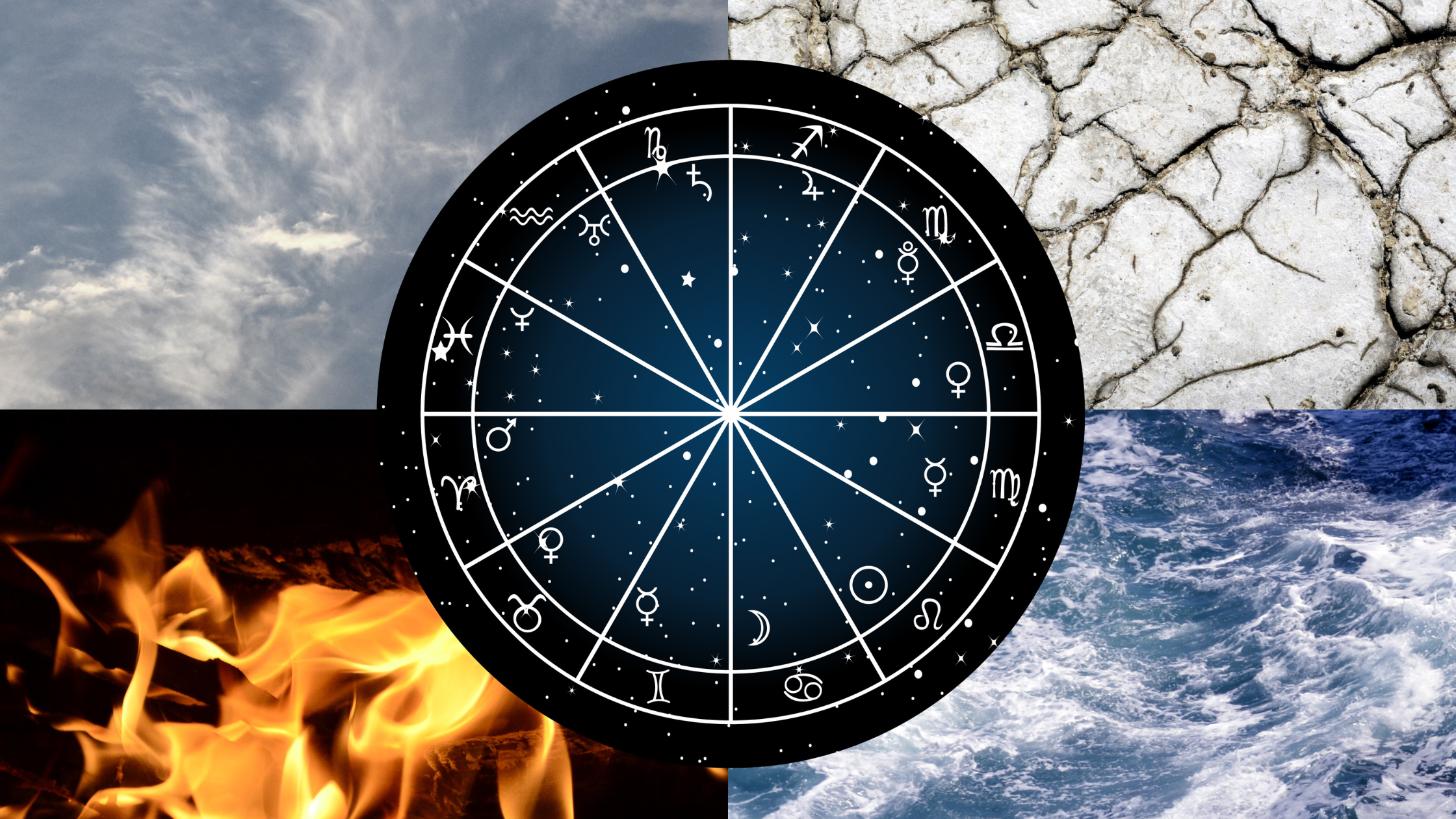
17. Do You Know The Key Elements Of Astrology?
In this section, we will understand the key aspects of astrology.
The Zodiac Signs: There are 12 zodiac signs and which tells us about the traits or characteristics a human posses. The categorization are mentioned below.
- Fire Signs: Aries, Leo, Sagittarius (passion, energy, creativity).
- Earth Signs: Taurus, Virgo, Capricorn (stability, practicality, material focus).
- Air Signs: Gemini, Libra, Aquarius (intellect, communication, social focus).
- Water Signs: Cancer, Scorpio, Pisces (emotion, intuition, depth).
- The Planets
- Personal Planets (influence daily life): Sun, Moon, Mercury, Venus, Mars.
- Social Planets (influence societal roles): Jupiter, Saturn.
- Outer Planets (influence generational traits): Uranus, Neptune, Pluto.
- Planets symbolize specific energies and govern areas of life. For instance, Mercury rules communication, while Venus governs love and relationships.
- The Houses
The 12 astrological houses represent different areas of life, such as relationships, career, health, and spirituality.
Purpose: Planets in a particular house reveal how and where their energy manifests in your life.
- The Aspects
Definition: Angular relationships between planets in a birth chart.
Types of Aspects:
- Conjunction (0°): Intensifies energy.
- Opposition (180°): Creates tension or balance.
- Square (90°): Indicates challenges.
- Trine (120°): Represents harmony and flow.
- Sextile (60°): Suggests opportunities.
Purpose: Aspects reveal the dynamics between planetary energies and how they interact.
- The Ascendant (Rising Sign)
Definition: The zodiac sign that was rising on the eastern horizon at the time of birth.
Significance: Reflects your outward personality, appearance, and first impression. It acts as the “mask” you wear in social situations.
- The Moon’s Nodes (North and South Node)
North Node: Represents your soul’s purpose and lessons to learn in this lifetime.
South Node: Indicates past life habits or traits you may need to release or balance.
- The Elements and Modalities
Elements: Fire, Earth, Air, Water—representing qualities of the signs.
Modalities: Cardinal (initiators), Fixed (stabilizers), Mutable (adapters)—describe how signs operate and respond to situations.
- Retrogrades
Definition: When a planet appears to move backward in its orbit from Earth’s perspective.
Effect: Retrogrades often bring introspection, delays, and opportunities to revisit past themes (e.g., Mercury retrograde and communication breakdowns).
- Transits
Definition: The current movements of planets and how they interact with a person’s natal chart.
Purpose: Helps astrologers predict events, cycles, and shifts in a person’s life.
- The Lunar Phases
New Moon: Beginnings and intention-setting.
Full Moon: Culmination, emotional intensity, and release.
Waning and Waxing: Indicate growth or release cycles.
- Fixed Stars
Definition: Stars that maintain a fixed position in the sky.
Significance: Fixed stars add unique meanings and nuances to a chart, often symbolizing destiny or talents.
- The Birth Chart (Natal Chart)
Definition: A snapshot of the sky at the exact moment of your birth, detailing the position of planets, signs, and houses.
Purpose: Serves as a blueprint for understanding personality, life purpose, and potential challenges.
- Eclipses
Solar Eclipse: New beginnings and unexpected changes.
Lunar Eclipse: Emotional breakthroughs or endings.
Purpose: Eclipses mark powerful, transformative times in astrology.
- Asteroids and Chiron
Chiron: Known as the “wounded healer,” it highlights areas of deep healing and growth.
Asteroids: (e.g., Ceres, Juno, Vesta) represent more nuanced aspects of life, such as nurturing, relationships, and devotion.
18. The Cultural Effect Or The Influence Of Celestial Study On Mankind
This section will tell us the impact the study of heavenly phenomena has on our culture or how it influences our lives.
- Shaping Religions and Mythologies
- Development of Calendars and Timekeeping
- Evolution of Navigation and Exploration
- Foundation for Modern Sciences
- Influence on Art and Architecture
- Cultural Superstitions and Beliefs
- Inspiration for Literature and Philosophy
- Societal Structuring and Power Dynamics
- Modern Cultural Impact
- Ethical and Spiritual Perspectives
19. The Benefits Of Astrology Is A Factor That You Should Know To Understand The Science Better
Let us see some benefits that astrology offers in this section.
- Self-Awareness and Personal Growth
- Better Decision-Making
- Relationship Compatibility
- Emotional Healing and Support
- Career Guidance
- Improved Self-Expression
- Connection to Cosmic Rhythms
- Stress Relief and Mental Clarity
- Spiritual Growth
- Unique Perspective on Life Events
- Enhancing Parenting Skills
- Community and Connection
- Cultural and Historical Appreciation
- Personalized Timing and Planning
- A Tool for Reflection
20. Some Interesting Facts To Know That Adds To The Charm To Horoscopy
Let us see some amazing facts that will shed new perspective to the forgotten science known as astrology.
- Astrology is Over 4,000 Years Old.
- This was once Synonymous with Astronomy.
- The Zodiac Signs Aren’t Based on Current Constellations.
- Astrology was used in Medicine.
- Mercury Retrograde is a Global Trend- We will learn more about this in some other blog. Stay tuned!!
- The Concept of Sun Signs is Relatively Modern.
- Astrology is Multicultural.
- Astrology Was Banned in Medieval Europe.
- Eclipses Were Seen as Omens.
- Astrology Influenced Language.
- Astrology is Not Just for Humans.
- The famous prophet Nostradamus used astrology to predict future occurrences.
- The oldest recorded horoscope, dating back to 410 BCE, was for a member of the Babylonian royal family.
- The Booming Industry Of App-Based Astrology.
- While most people know their Sun sign, the Ascendant or the Rising Sign represents how a person present themselves to the world.
- Presidents and Celebrities Have Consulted Astrologers.
21. Ever Thought About The Topics That Can Be Related To The Study Of Divination?
Let us get to know some topics that attributes its core aspects from astrology.
- Numerology
Both astrology and numerology offer insights into personality, relationships, and destiny by decoding symbolic patterns. While astrology uses celestial movements, numerology focuses on numbers derived from names, birthdates, and life events.
Interesting Connection: Many astrologers incorporate numerology to offer deeper interpretations, particularly when analyzing life cycles and compatibility.
- Tarot Reading
Tarot cards often align with astrological symbols, such as zodiac signs and planetary influences. For instance, The Emperor card is linked to Aries, while The Star is connected to Aquarius.
Interesting Connection: Using tarot alongside astrology allows for a more intuitive and symbolic understanding of life events and decisions.
- Palmistry (Chiromancy)
Palmistry and astrology share a historical connection in ancient traditions like Indian Samudrika Shastra, where both practices are used for divination and personal insight.
Interesting Connection: The mounts in palmistry (e.g., Mount of Venus, Mount of Saturn) are directly linked to astrological planets, creating a fascinating overlap.
- Chakra Healing and Energy Work
Astrology often connects zodiac signs and planets to energy centers or chakras in the body. For example, Aries rules the head and is associated with the crown chakra.
Interesting Connection: Astrological insights can guide individuals on which chakras may need healing or balance
- Crystal Healing
Crystals are often associated with specific zodiac signs and planets, amplifying energy and aligning with astrological traits. For example, Amethyst is linked to Aquarius, while Ruby is connected to Leo.
Interesting Connection: Astrology provides guidance on choosing crystals to enhance personal energy, reduce stress, or align with planetary transits.
- Meditation and Mindfulness
- Astrology can guide individuals toward meditation practices tailored to their zodiac traits or current planetary transits.
Interesting Connection: Zodiac-based meditation can help people focus on self-awareness, emotional healing, and aligning with cosmic energy.
- Astronomy
Astronomy is the scientific study of celestial bodies, while astrology interprets their movements to predict human behavior and events. Both disciplines share a fascination with the stars and planets.
Interesting Connection: Astronomy can offer a scientific lens to explore the celestial phenomena astrology relies upon, enhancing credibility and interest.
- Mythology and Folklore
Many astrological signs and planets are rooted in mythology. For instance, Mars represents the Roman god of war, and Virgo is tied to the goddess Demeter.
Interesting Connection: Exploring mythology deepens the understanding of astrological symbols and their archetypal meanings.
- Feng Shui
Feng Shui, the ancient Chinese practice of spatial harmony, aligns with astrology through elements like Earth, Fire, Water, and Metal, which are also present in zodiac signs.
Interesting Connection: Astrology and Feng Shui can be combined to create harmonious environments based on planetary energy and zodiac traits.
- Dream Interpretation
Astrology can provide insights into dream symbolism based on planetary transits and zodiac influences.
Interesting Connection: Linking dreams and astrology adds a new dimension to understanding the subconscious and spiritual messages.
22. Retrospecting The Disadvantages Of Astrology
We, as humans have two sides-good and bad. The similar is the case for astrology. Let us see its non-meritorious side.
- Astrology is based on the belief that supernatural forces shape human lives.
- Lacks scientific evidence.
- Ideas cannot be proven.
- Cannot guarantee the future.
- Paves way for superstitions.
- Makes people give up easily as they think that the happenings are based on their charts.
- People tend to lose a fortune showing to some so called god-men.
23. The Branches Of Celestial Study And Where The Focus Is Centered
Let us see the main purpose of each type of astrology in this section. We have added quotes in this section so you can understand better.
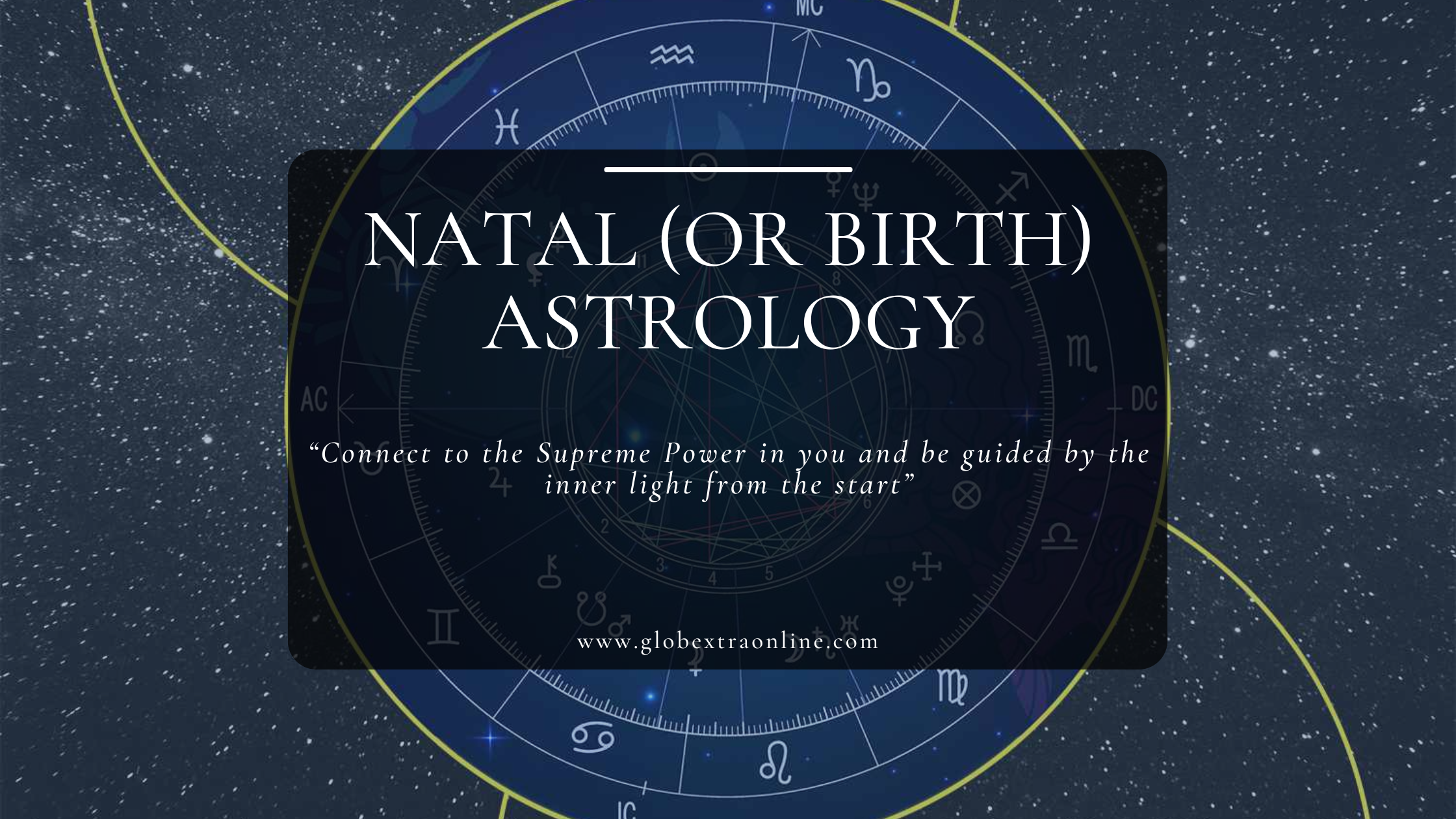
- Natal (or Birth) Astrology
Focus: Analyzes the positions of the planets at the time of a person’s birth to create a natal chart (or horoscope). This chart is used to understand an individual’s personality, potential, strengths, weaknesses, and life path.
Common Uses: Personality analysis, life events, relationships, and career predictions.
“Connect to the Supreme Power in you and be guided by the inner light from the start”.
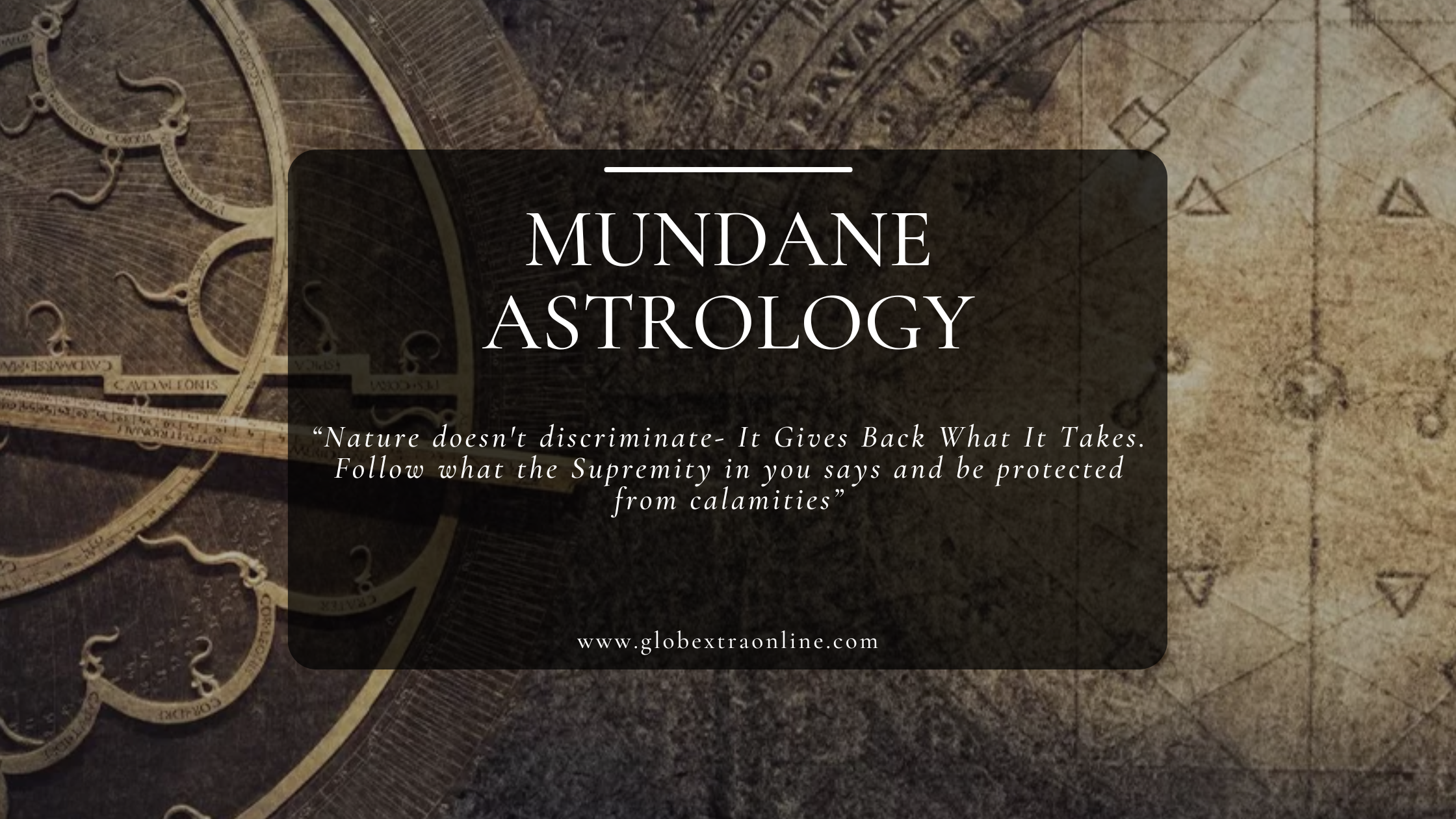
- Mundane Astrology
Focus: Studies the influence of celestial bodies on world events, nations, and large-scale phenomena. It looks at political trends, wars, economic changes, and environmental conditions.
Common Uses: Predictions about global events, elections, and natural disasters.
“Nature doesn’t discriminate- It Gives Back What It Takes. Follow what the Supremacy in you says and be protected from calamities”.
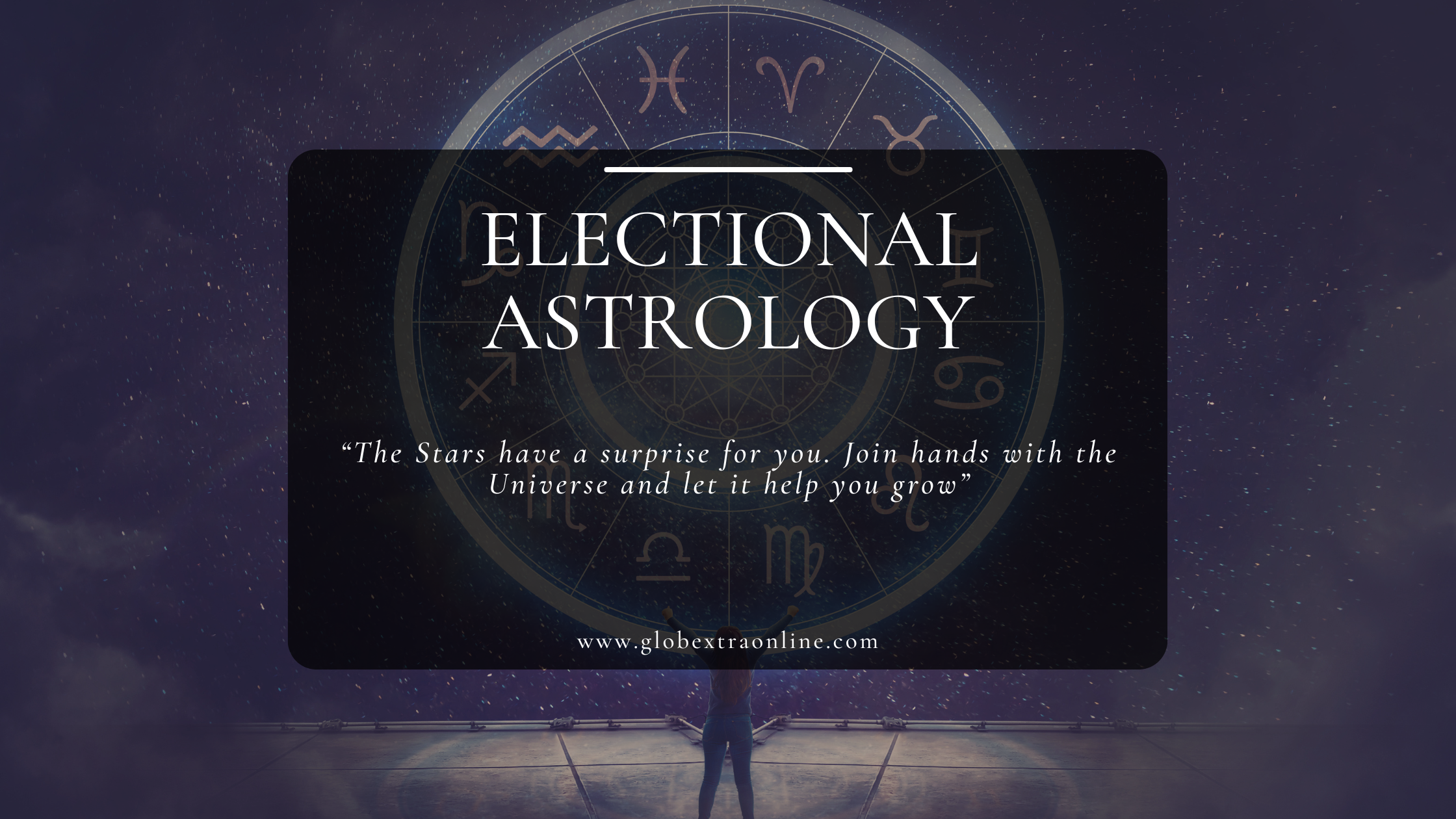
- Electional Astrology
Focus: Determines the best times to undertake significant events or decisions (e.g., starting a business, getting married, signing contracts).
Common Uses: Helping individuals select favorable times for personal milestones or important decisions.
“The Stars have a surprise for you. Join hands with the Universe and let it help you grow”.
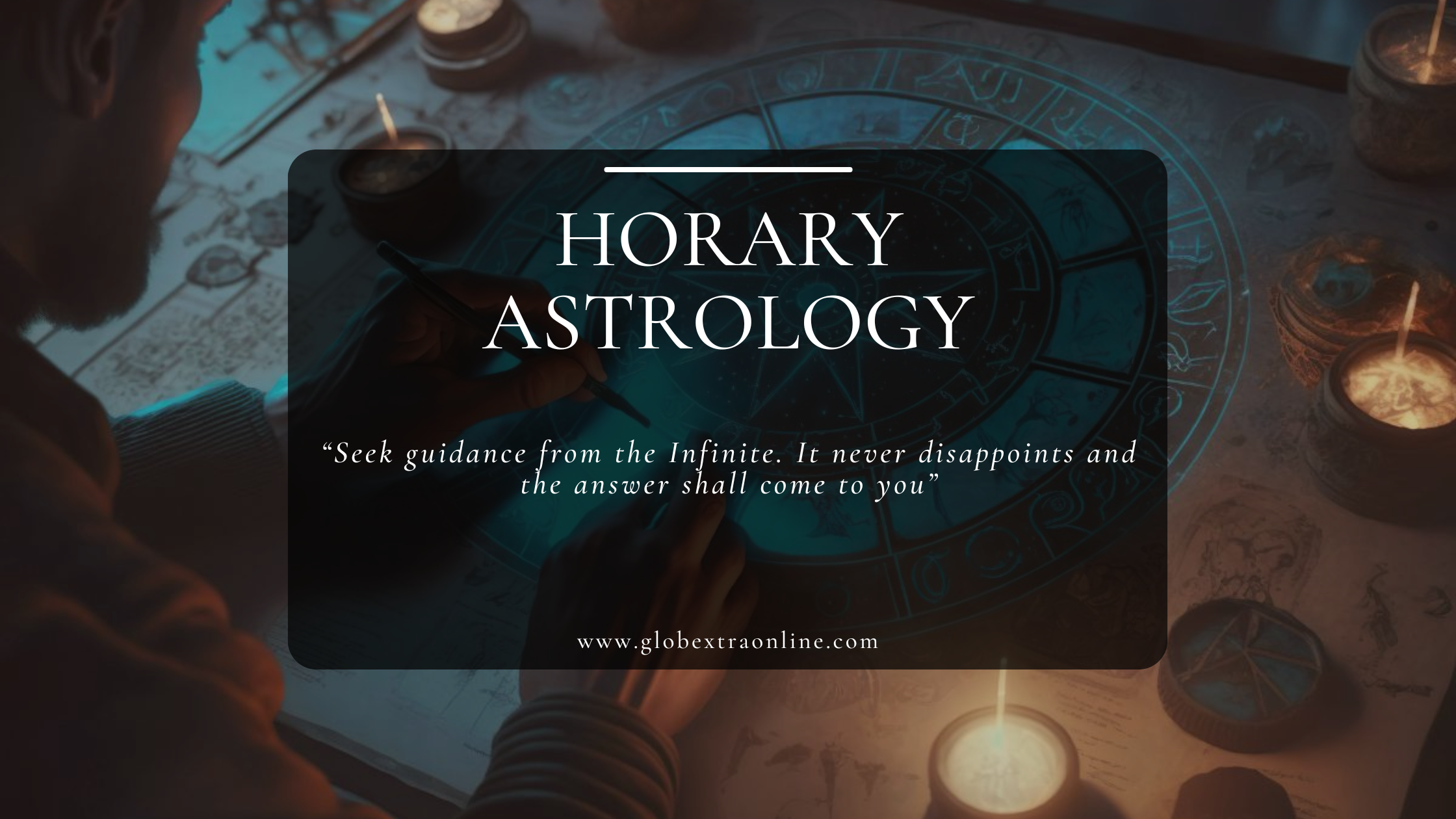
- Horary Astrology
Focus: Answers specific questions by analyzing the positions of the planets at the time the question is asked. It’s used to provide guidance on specific issues, often in a short timeframe.
Common Uses: Providing answers to questions about relationships, career, health, or finances.
“Seek guidance from the Infinite. It never disappoints and the answer shall come to you”.
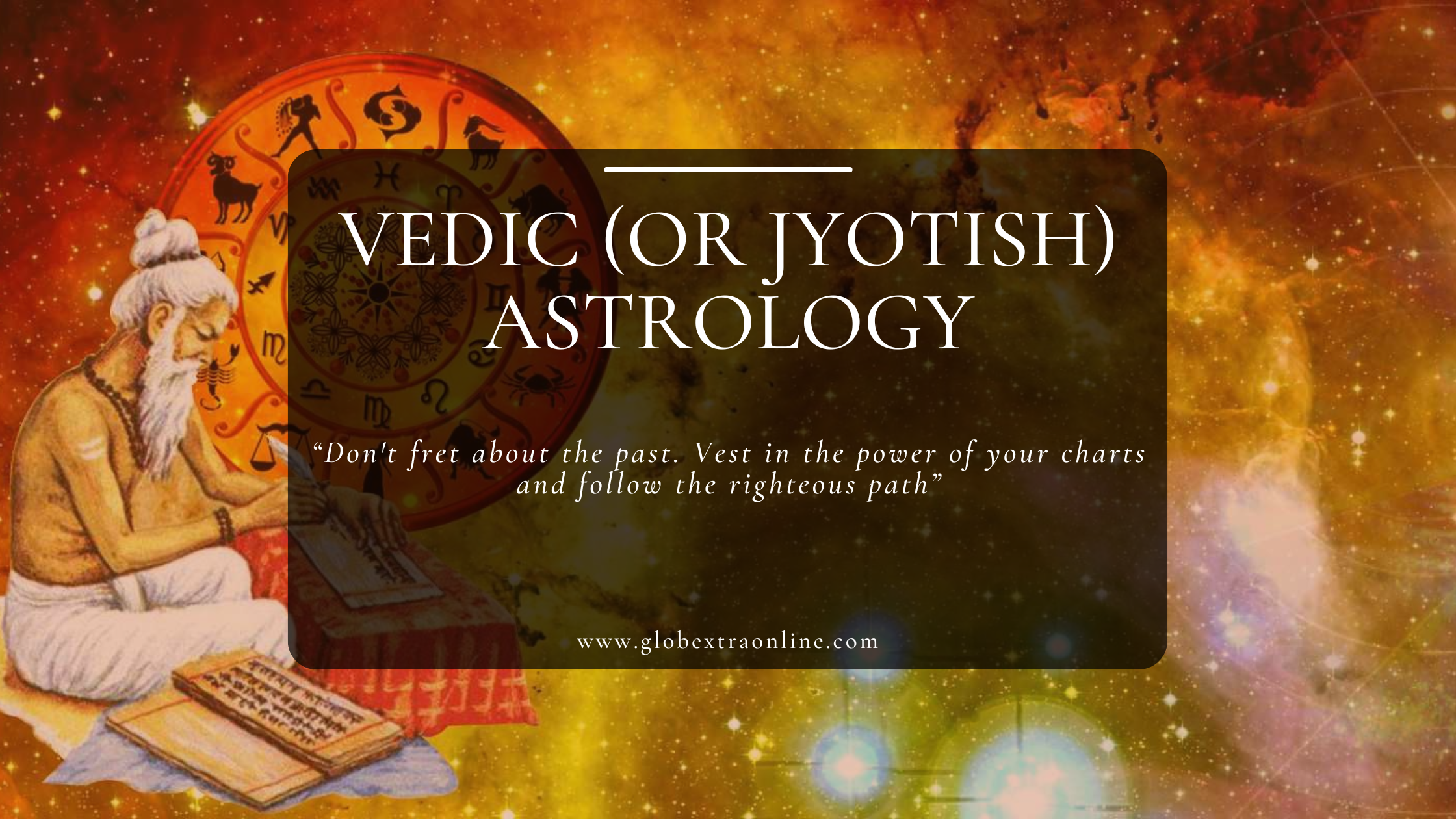
- Vedic (or Jyotish) Astrology
Focus: A traditional system of astrology rooted in ancient Indian texts, such as the Vedas. It uses the sidereal zodiac (different from the tropical zodiac in Western astrology) and focuses on planetary periods (Dashas).
Common Uses: Spiritual growth, karma analysis, marriage compatibility, and life predictions.
“Don’t fret about the past. Vest in the power of your charts and follow the righteous path”.
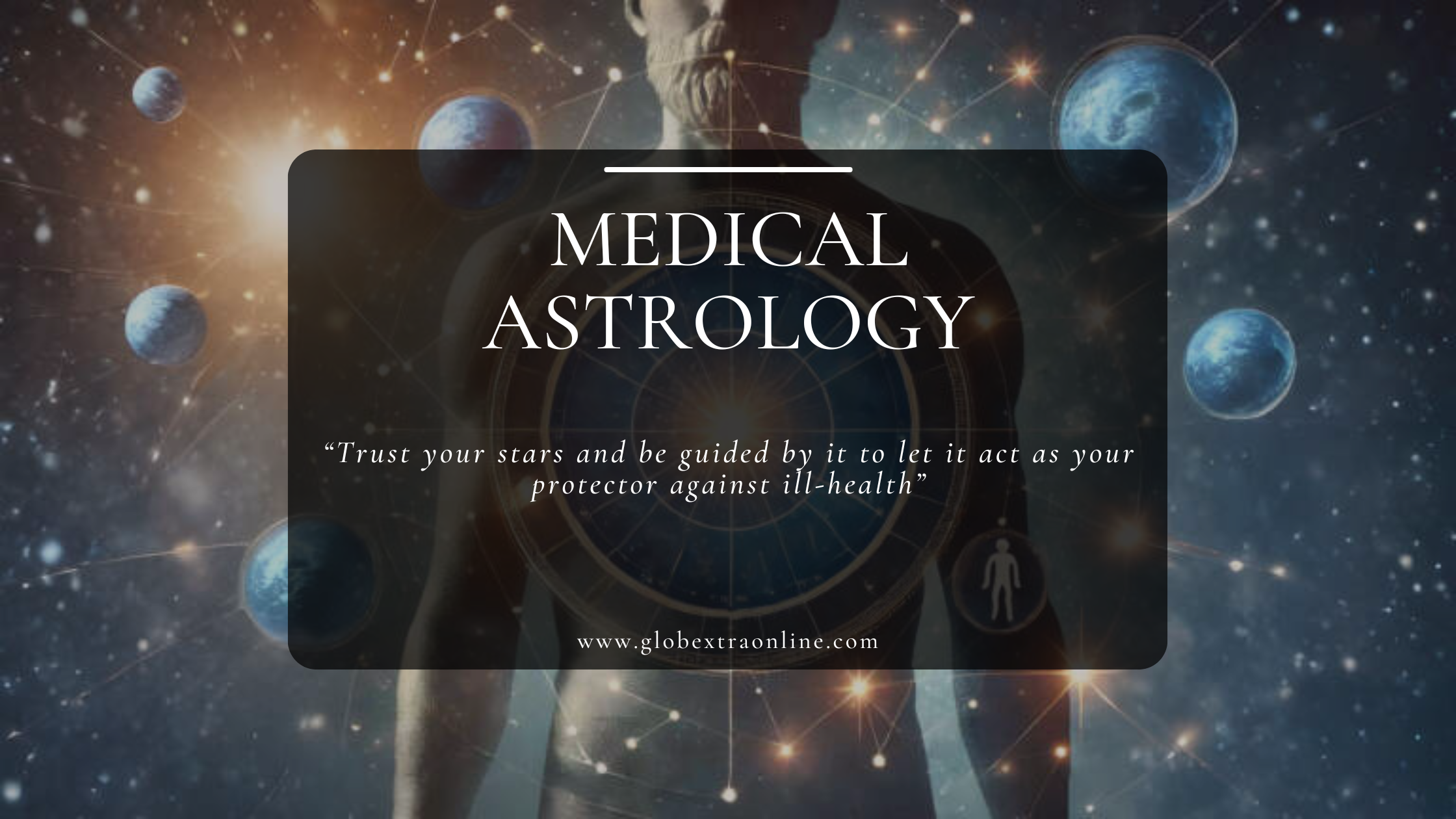
- Medical Astrology
Focus: Examines the connections between the positions of the planets and a person’s health. It is used to identify potential health issues or predispositions based on an individual’s natal chart.
Common Uses: Diagnosing health conditions, understanding physical vulnerabilities, and recommending lifestyle adjustments.
“Trust your stars and be guided by it to let it act as your protector against ill-health”.
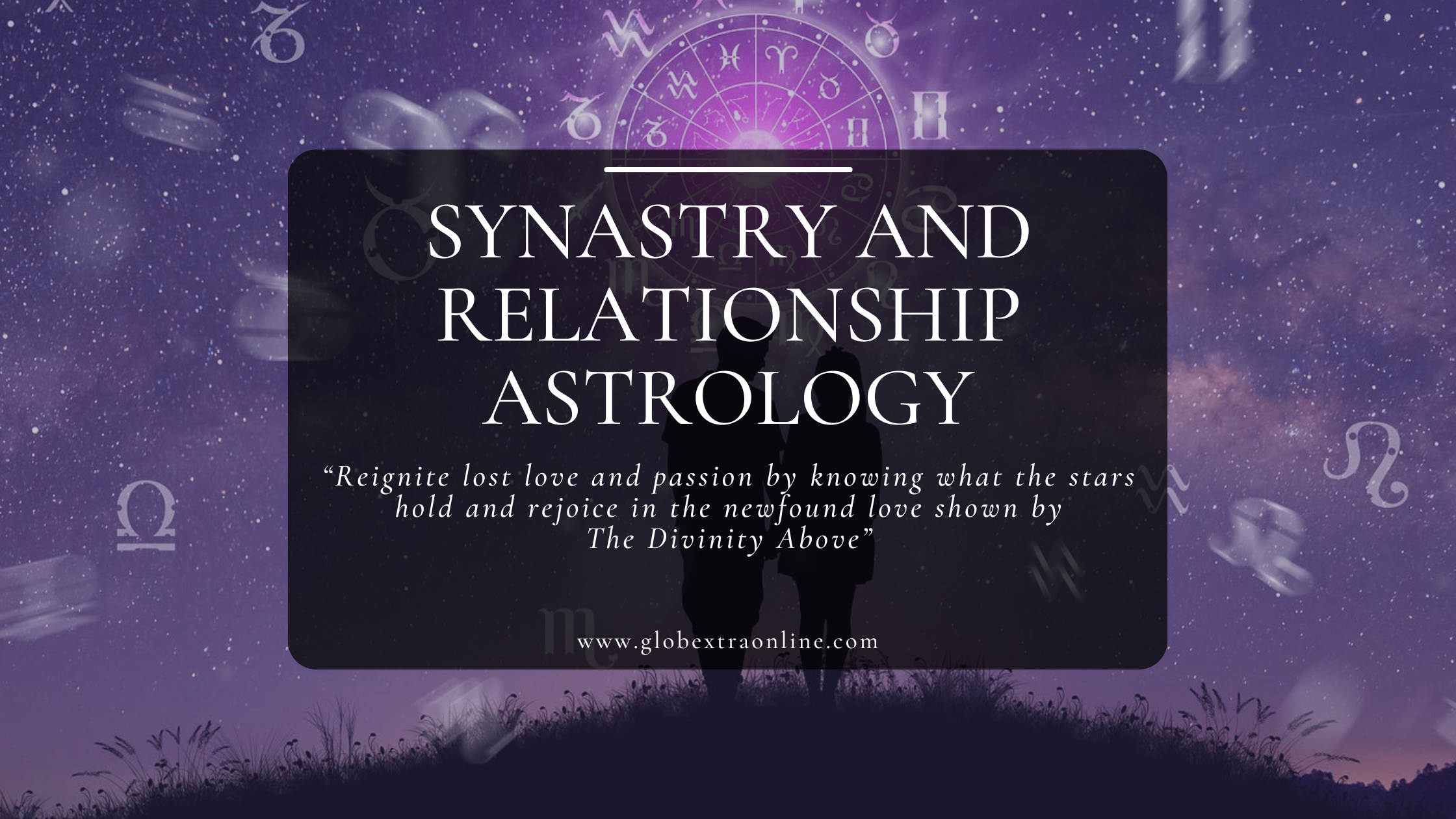
- Synastry and Relationship Astrology
Focus: Studies the compatibility of two or more individuals based on their birth charts. This branch is commonly used to analyze romantic, business, or family relationships.
Common Uses: Understanding relationship dynamics, identifying strengths and challenges, and enhancing communication between partners.
“Reignite lost love and passion by knowing what the stars hold and rejoice in the newfound love shown by The Divinity Above”.
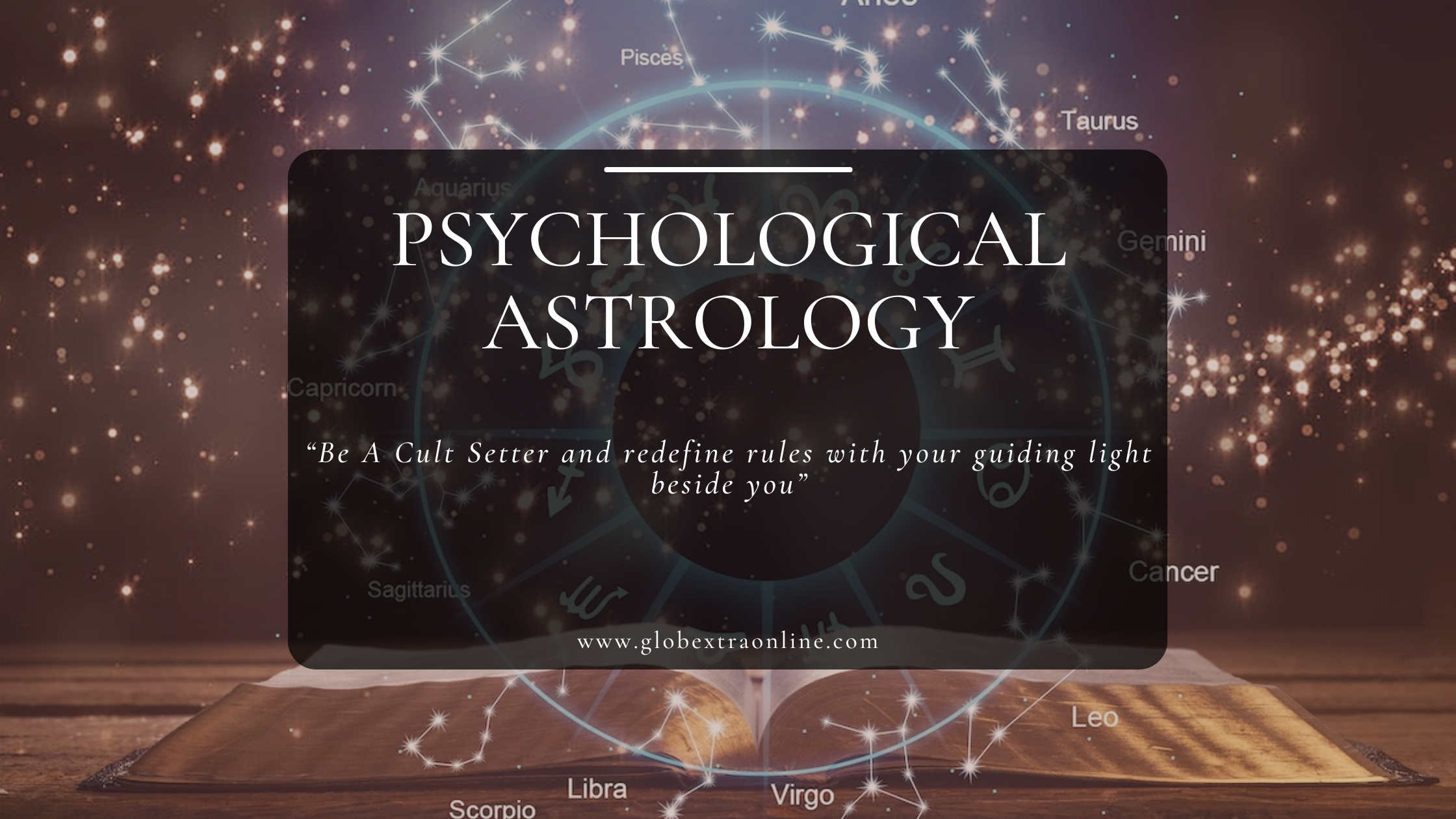
- Psychological Astrology
Focus: Combines traditional astrology with modern psychology. It explores how planetary positions influence mental and emotional traits, and how an individual’s psyche is shaped by their chart.
Common Uses: Personal growth, therapy, and understanding deep psychological patterns and emotional needs.
“Be A Cult Setter and redefine rules with your guiding light beside you”.
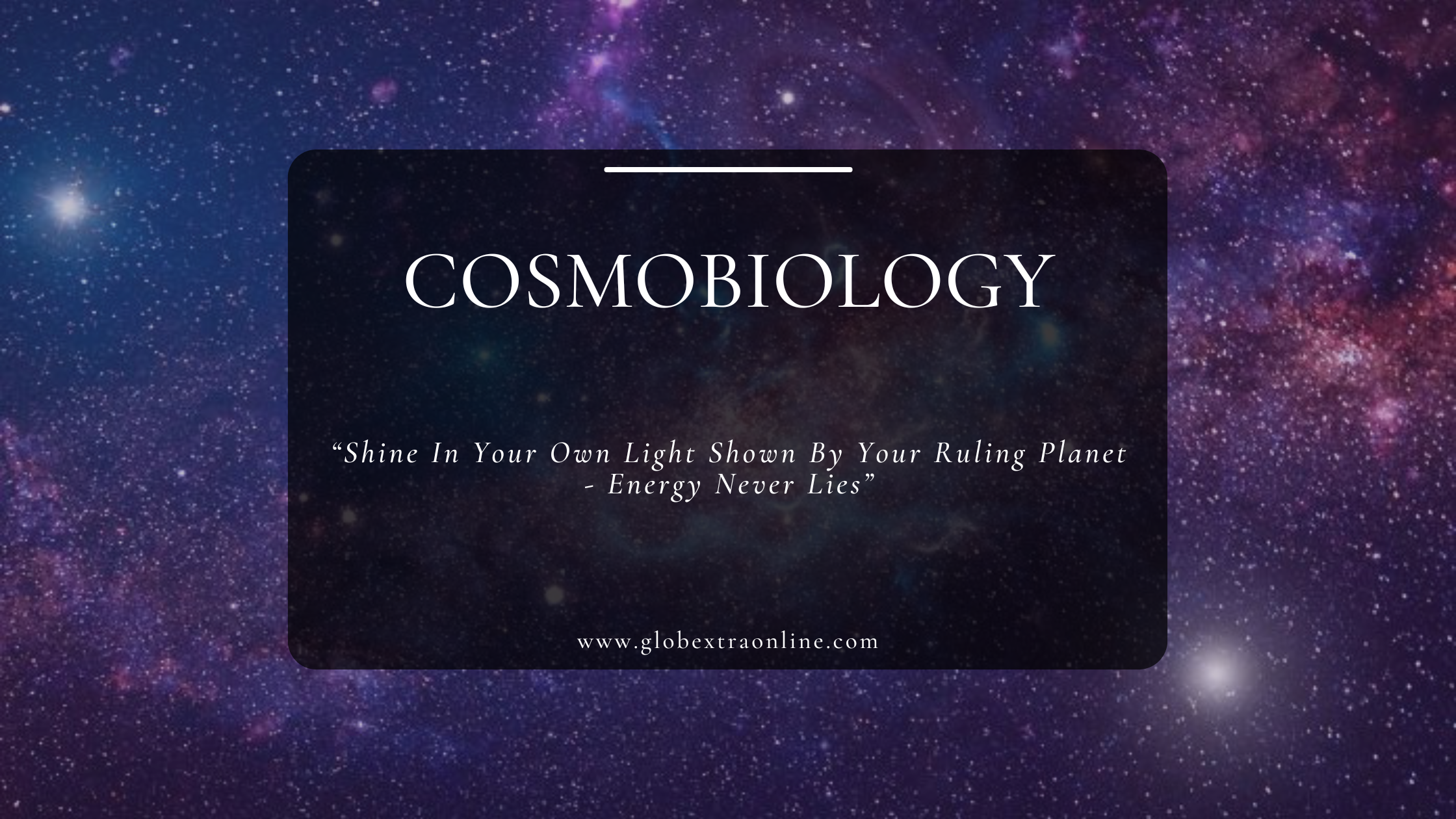
- Cosmobiology
Focus: A modern branch of astrology that focuses on the study of planetary aspects and their influence on the human body, behavior, and events.
Common Uses: Health, well-being, and understanding personal development.
“Shine In Your Own Light Shown By Your Ruling Planet- Energy Never Lies”.
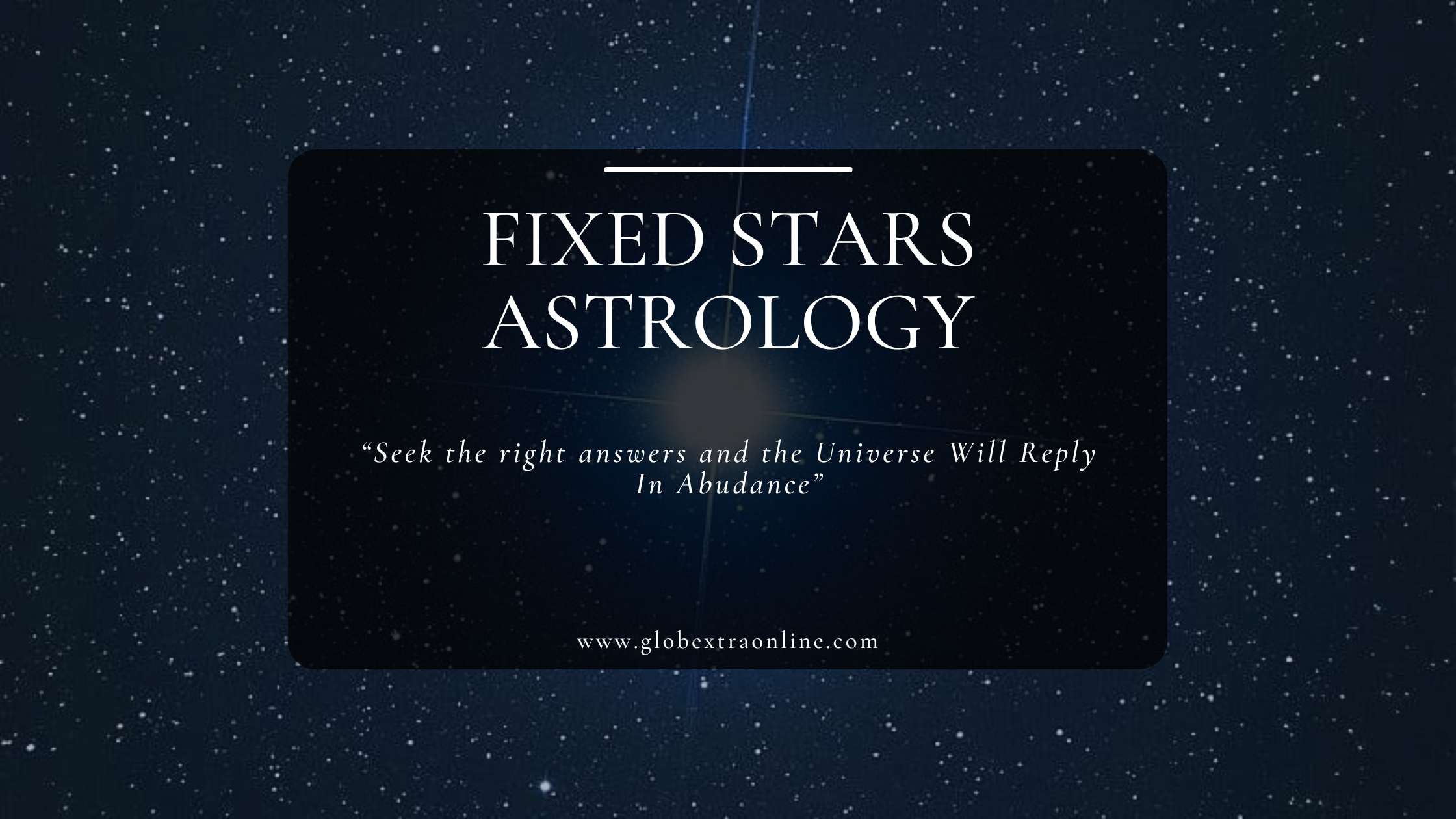
- Fixed Stars Astrology
Focus: Examines the positions of fixed stars (those that appear relatively stationary in the sky) and their influence on human life. Fixed stars are often tied to specific qualities, themes, or events.
“Seek the right answers and the Universe Will Reply In Abundance”.
Common Uses: Exploring deeper spiritual meanings and long-term cycles in an individual’s life.
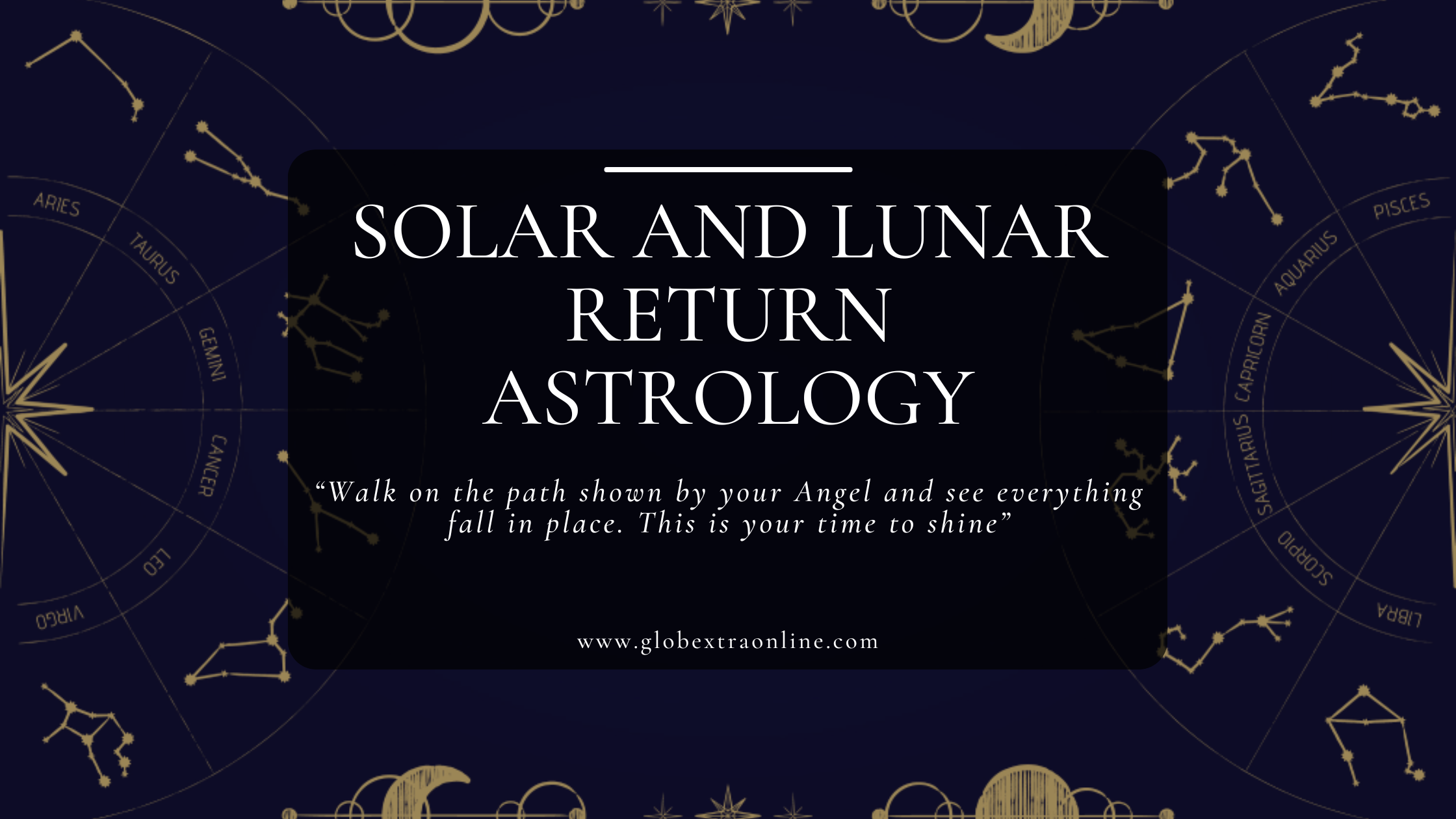
- Solar and Lunar Return Astrology
Focus: Analyzes the charts of the exact moment the Sun or Moon returns to the same position as at the time of one’s birth (i.e., on a person’s birthday or the lunar anniversary). These charts offer insights for the year ahead.
Common Uses: Predicting themes or events for the upcoming year, guiding personal growth and planning.
“Walk on the path shown by your Angel and see everything fall in place. This is your time to shine”.
24. Do You Know Some Famous Historical Astrologers?
Let us know some famous astrologers who have earned a name for themselves.
- Ptolemy
- Abu Maʿshar
- Varāhamihira
- Johannes Kepler
- Nostradamus
- William Lilly
- Al-Biruni
- Vettius Valens
- Alan Leo
- Ben Dykes
- Guido Bonatti
- Cheiro
- Evangeline Adams
- Claude Ptolemy
25. Some Common Myths Surrounding Astrology That Ought To Be Cleared
In this section, we will learn about some myths that have fogged astrology and it is high time we remove these cobwebs.
- Astrology is a Form of Magic or Superstition
- Predicts the Future with 100% Accuracy
- Only Involves Sun Signs
- This is a Modern Concept
- Astrological Signs Are Fixed for Everyone
- Against Religion
- Astrology and Astronomy Are the Same
- Only About Horoscopes
- Controls Your Life
- Only Certain Professions or People Believe in Astrology
- Astrology is Gender-Specific
- The divine study is Irrelevant in Modern Times
- Astrology is Always Right
- Astrology Works the Same Everywhere
26. Do You Know That Asteroids Play An Important Role In Astrology?
Let us see the role played by asteroids that further determine your future in this section.
Asteroids concerning astrology were only discovered in the 19th century and their study has helped astrologers to gain deeper insights into the individuals birth-chart-enabling them to make factual predictions. The four major asteroids -Ceres, Pallas, Juno, and Vesta & are further associated with specific themes and energies.
We will study them in detail in another blog. Stay tuned.
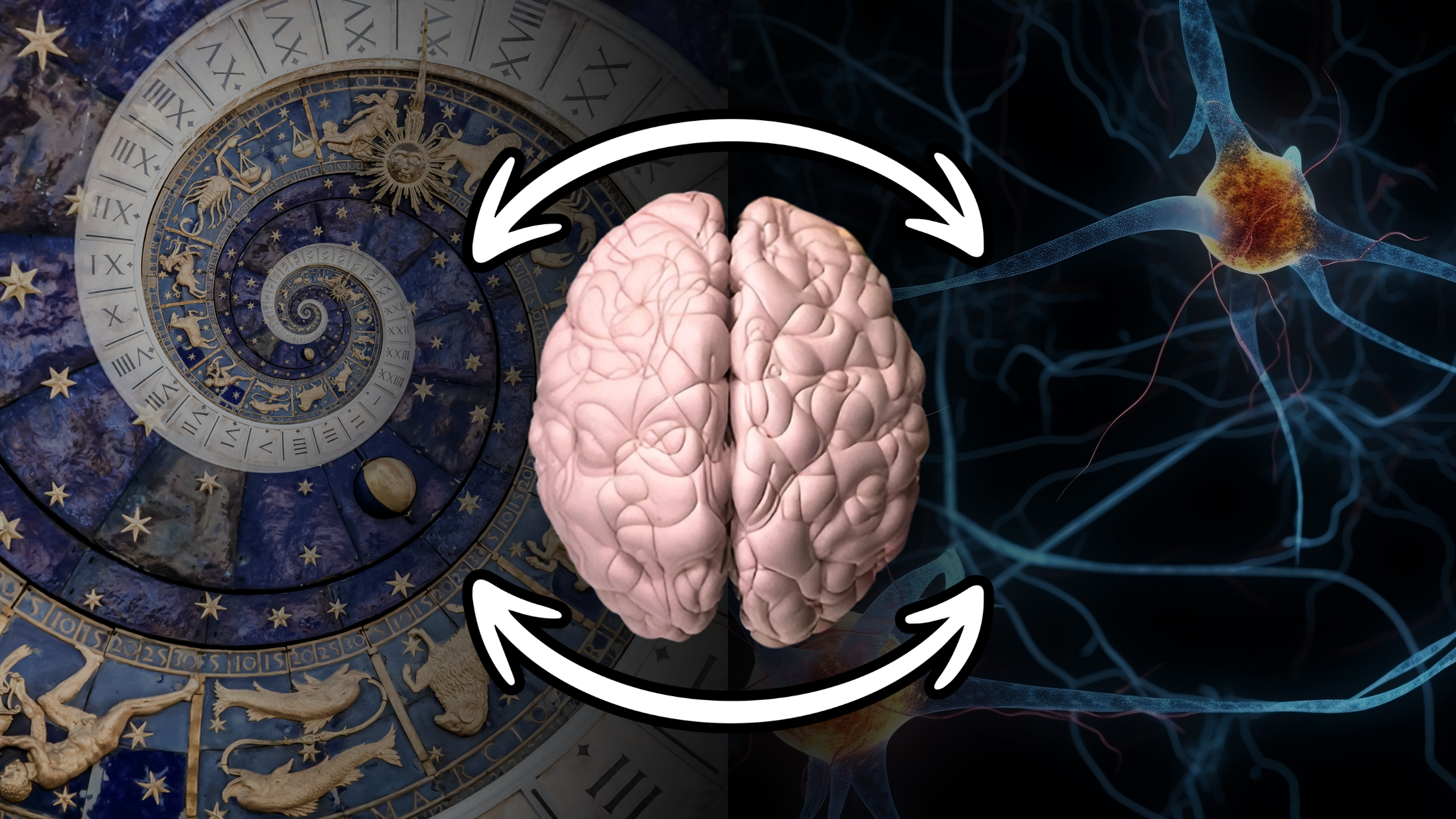
27. Zodiac Signs & Their Relation With Brain Dominance
You might have heard people commenting on how an individual is influenced by their left or right brain. However, have you ever thought about the reason? If you have never pondered on this, read this section to understand better.
- Fire Signs (Aries, Leo, Sagittarius): Associated with right-brain dominance- fostering creativity and the ability to think instantly.
- Earth Signs (Taurus, Virgo, Capricorn): Linked to logical and analytical thinking.
At Globextra, we leverage this understanding to communicate better with our team and bring out the best in them.
28. What Is Galactic Astrology Is Another Term That Should Be Known?
The study of the celestial bodies in our galaxy, the Behavioural of the heavenly bodies and the whole universe play an important role in shaping our future is what galactic astrology is all about. This involves the study of stars like the Pleiades, Sirius, Andromeda, or Arcturus and is based on specific planetary alignments & placements in the birth chart. We don’t want to overcomplicate things here for you, so we thought of writing a separate blog on Galactic astrology. So, stay connected, and don’t forget to follow us.
29. Want To Know The Connection Between Astrology & Science?
Let us see the fascinating link between the study of the universe and science in this section.
- Astrology and Circadian Cycles or Rhythms
The Moon’s cycles influence human sleep patterns, hormonal changes, and emotional well-being. This aligns with the science of circadian rhythms, showing how celestial movements impact our biological patterns.
- Astrology and Agriculture
Farmers since long have used the Moon’s phases for planting and harvesting. Lunar calendars are still in use today and combines ancient wisdom with sustainable agriculture practices.
30. Astrology & Its Evolution In The Digital Age Deserves A Mention
Astrology as a science is slowly losing its charm or so we thought. The recent times have seen an uphill climb for the study of heavenly bodies and in this section, we will see how this was made possible in brief.
AI-Driven Astrology Apps
Astrology has entered the tech era with AI-powered apps like Co-Star and The Pattern, which provide hyper-personalized horoscopes. While convenient, these apps lack the intuition of a skilled astrologer.
Astrocartography: Mapping Your Cosmic Path
Astrocartography is the practice of analyzing how different locations impact your natal chart. Want to know the best place to live or find love? This can also can provide insights based on planetary alignments.
31. Want To Some Rising Trends In Astrology?
In this section, we will see some trends that are gaining momentum in this field. We like to call this “Navigating The Cosmic Shift”. So, let us see some trends below.
Astrology, once a niche interest, has made a major comeback in recent years. Thanks to the rise of social media, digital platforms, and increased spiritual curiosity, astrology is experiencing a renaissance. People from all walks of life are seeking cosmic guidance and connecting with their deeper selves through the stars. Here are some of the rising trends in astrology that are gaining momentum and capturing the collective imagination:
- Astrology Meets Technology: AI and Astrology Apps
The digital revolution has brought astrology into the palm of your hand. Apps like Co-Star, The Pattern, and Sanctuary provide hyper-personalized horoscopes based on your natal chart. These apps use AI to analyze astrological data and offer tailored insights, with daily, weekly, and monthly forecasts. The rise of these apps represents a merging of ancient wisdom with modern technology, making astrology more accessible and practical.
Trend Insight: As AI and machine learning continue to evolve, astrology apps will become increasingly accurate and personalized. Expect to see more interactive, real-time astrological experiences.
- Astrocartography: Mapping Your Cosmic Path
Astrocartography is a niche branch of astrology that analyzes how different locations on Earth affect your astrological chart. By mapping out your planetary lines, astrologers can help you find places that align with your energy, boosting love, career, or health.
Trend Insight: This trend is gaining popularity among digital nomads, travelers, and individuals looking to move or start fresh. People are increasingly turning to astrocartography to choose locations based on astrological compatibility, especially when relocating for career or personal reasons.
- Vedic Astrology’s Resurgence
While Western astrology dominates the mainstream, Vedic Astrology (also known as Jyotish) is experiencing a resurgence, especially in the West. Vedic astrology places a strong emphasis on the Moon’s position and uses a different zodiac system than the Western system, offering a unique perspective on personality, life purpose, and future predictions. The growing interest in spiritual practices from the East has contributed to its popularity.
Trend Insight: As more people turn to Eastern philosophies for answers, the demand for Vedic astrology readings, along with other related disciplines like Ayurveda and meditation, is expected to increase.
- The Return of the Personal Astrologer
Gone are the days when astrology was limited to newspapers or generic online horoscopes. More people are turning to professional astrologers for one-on-one readings that offer in-depth insight into their lives. With a desire for personalized advice, people are looking to astrologers to provide specific guidance on love, career, and life decisions.
Trend Insight: This resurgence in personal astrology readings has led to the rise of virtual consultations. People are now comfortable seeking astrologers via video calls and chat platforms, making astrological services more accessible to global audiences.
- Astrology and Wellness
Astrology’s growing connection with mental and emotional wellness is one of the biggest trends of the moment. Astrological insights are being integrated into self-care routines, yoga practices, and even mindfulness and therapy. People are learning how to use their natal charts and moon phases to align with their emotional and psychological needs.
Trend Insight: The combination of astrology and wellness will likely continue to flourish. Expect to see more wellness brands, yoga instructors, and therapists incorporating astrology into their practices. Moreover, books and resources focused on astrology-based healing are also gaining popularity
- Lunar Astrology and Manifestation
Lunar cycles, particularly the New Moon and Full Moon phases, are becoming key focus points for manifestation rituals, goal setting, and personal growth. Many individuals are aligning their goals and intentions with the energy of the moon, using astrology to make powerful intentions during certain lunar phases. The concept of manifestation has grown tremendously in the past few years, and astrology is playing a significant role in this practice.
Trend Insight: Expect to see more resources on how to manifest based on astrology, including workshops, online communities, and guided manifestation rituals tied to the moon’s energy.
- Astrological Birth Chart Readings for Relationships
Astrology has long been used to understand relationship compatibility, but the trend is now expanding into the realm of synastry (the comparison of two birth charts). This practice is gaining popularity among those seeking more meaningful connections and deepening their relationships. People are not just looking at Sun signs but diving into Moon signs, Venus placements, and other key points of astrology to understand how they interact with their partners.
Trend Insight: There is a growing market for relationship-focused astrology services, whether it’s for romantic relationships, friendships, or even business partnerships.
- Astrological Influences on Fashion and Style
Astrology is even influencing the fashion world! Influencers and trendsetters are turning to astrology to help guide their fashion choices. From selecting colors based on their zodiac sign to creating outfits that align with specific planetary transits, the fashion industry is tapping into astrology to help people express their personality through clothing.
Trend Insight: As astrology continues to permeate mainstream culture, we can expect to see more collaborations between fashion brands and astrologers, as well as personalized fashion advice based on astrological profiles.
- The 13th Zodiac Sign Debate (Ophiuchus)
Although the 13th zodiac sign, Ophiuchus, is often left out of mainstream astrology, it has been gaining traction in recent years. Ophiuchus, associated with healing, knowledge, and transformation, is believed to lie between Scorpio and Sagittarius in the astrological calendar. While many reject its inclusion, others are advocating for its place in modern astrology.
Trend Insight: The inclusion of Ophiuchus in astrology could reshape traditional horoscopes and influence the way people view their identities. Some astrologers are already adjusting their practices to account for this shift.
- Astrology and Social Media Integration
Astrology is becoming a dominant force on social media platforms, especially Instagram, TikTok, and YouTube. Influencers and astrologers are using these platforms to share personalized horoscopes, astrological content, and even video tutorials about how astrology can improve one’s life. Memes and astrology-related content are going viral as the younger generation embraces these cosmic teachings.
Trend Insight: Social media-driven astrology is expected to become more interactive and interactive, with live astrology readings and community-based astrology discussions becoming more common. Astrology will continue to expand its influence in the digital space.
32. Want To Know How Solar And Lunar Eclipses Are Used To Predict Our Future?
Eclipses are powerful astrological events that often indicates sudden, transformative changes. Solar eclipses represent new beginnings and unexpected shifts, while lunar eclipses often point to endings, completions, or revelations.
Astrologers carefully monitor the timing and locations of eclipses, especially in relation to a person’s natal chart. Eclipses are considered to reveal hidden truths or indicate significant life changes. This can be in career, relationships, or personal growth. These shifts can often take us down paths we hadn’t fantasized, but they are considered crucial for spiritual growth.
33. Some Hidden Gems Of Astrology That We Should Know
The world and our universe is full of mysteries and so why should a filed that relies solely on the study of the universe and beyond be left behind? In this section, we will unearth some hidden gems in brief.
- Asteroidal Astrology
Focus: Studies the influence of asteroids, such as Ceres, Juno, Vesta, and Pallas Athena, in an individual’s chart. These asteroids are considered to represent various aspects of life, such as nurturing, relationships, creativity, and wisdom.
Common Uses: Understanding more nuanced areas of life, such as self-care, nurturing energy, and intellectual or creative pursuits.
- Draconic Astrology
Focus: A spiritual branch of astrology that uses a “draconic” (or dragon) zodiac, which is based on the North Node of the Moon. It is believed to provide insights into an individual’s soul purpose or spiritual destiny.
Common Uses: Understanding a person’s soul mission and karmic influences, often used for deep spiritual exploration.
- Hellenistic Astrology
Focus: The ancient Greek approach to astrology that blends philosophy, mythology, and astronomy. It includes techniques such as the Lots (or Arabic Parts), which are points calculated in a person’s chart that can reveal specific life themes.
Common Uses: Understanding the philosophical and ethical dimensions of astrology, exploring fate and destiny, and analyzing life events through historical and mythological lenses.
- Uranian Astrology
Focus: A system of astrology developed in the early 20th century that uses a specific set of mathematical points, including hypothetical planets such as Zeus, Apollo, and Hades. It also incorporates midpoints and direct point-to-point connections between planets.
Common Uses: Delving into more precise, technical analysis of individual and societal events, especially for prediction and timing.
- Vedic Numerology
Focus: Combines astrology with numerology, focusing on the influence of numbers and planetary alignments on a person’s life. This system is often used in conjunction with Vedic astrology for a more comprehensive understanding.
Common Uses: Finding auspicious times (mahurats), understanding life paths, and analyzing karmic influences through both astrology and numerology.
- Firdaria (Persian Astrology)
Focus: A Persian method of predicting life events based on the positions of planets and their movements through time. The system divides a person’s life into specific periods, each ruled by a particular planet.
Common Uses: Long-term life forecasting, understanding the phases of a person’s life, and providing insight into the timing of significant events.
- Zodiacal Releasing (Greek Astrology)
Focus: An ancient Greek technique that uses the concept of releasing, or “activating,” different sectors of a person’s life by calculating planetary cycles. It focuses on the timing of significant life events.
Common Uses: Timing important life events such as marriage, career changes, and spiritual milestones.
- Eclipses and Lunar Astrology
Focus: Specializes in the analysis of eclipses (solar and lunar) and their impact on human lives. It looks at how eclipses activate specific parts of a person’s natal chart.
Common Uses: Understanding how eclipses influence personal transformation, cycles, and major life changes.
- Sidereal Astrology
Focus: An astrology system that uses the actual constellations of the sky, as opposed to the tropical system used in Western astrology. Sidereal astrology is commonly practiced in Vedic astrology.
Common Uses: More accurate timing and predictions by aligning with the true positions of celestial bodies in the sky.
- Fixed Stars Astrology
Focus: Studies the influence of fixed stars (those that are relatively stationary in the sky) on human lives. These stars are not part of the typical zodiac signs but can hold specific meanings based on mythology and symbolism.
Common Uses: Providing deeper insight into spiritual themes, long-term cycles, and specific talents or challenges.
- Psychological and Evolutionary Astrology
Focus: Combines modern psychological principles with astrology, focusing on personal development, emotional growth, and the soul’s evolution through multiple lifetimes (karmic astrology).
Common Uses: Exploring psychological patterns, healing emotional wounds, and understanding deep inner motivations.
- Medieval Astrology
Focus: An astrological system that was prevalent in the Middle Ages and is based on a combination of Hellenistic, Arabic, and early European techniques. It often uses lots, planetary dignities, and other medieval techniques to analyze charts.
Common Uses: Timing events, understanding life themes, and interpreting fate based on planetary positions.
34. Want To Know If Your Favorite Movie Is Inspired From Astrology?
As movie-buffs, we wait for days or even months for its release on the big curtain. But, have you thought that it might just casually or deliberately be inspired by astrology? We know this might have come across as a surprise and so we thought of including this in our blog. So, let us learn about some names in this section.
- The Fountain (2006)
Astrological Influence: This film explores the themes of immortality, reincarnation, and the eternal connection of life through the journey of a man’s quest to save his wife. Spanning across different timelines with each over thousand years, emphasizes the connection between the stars and the eternal soul reflects the celestial influence seen in astrology.
- Zodiac (2007)
Astrological Influence: Based on the true story of the Zodiac Killer who terrorized San Francisco Bay Area-the film explores cryptic clues, astrology symbols, and coded messages that hints at the killer’s identity.
- The Celestine Prophecy (2006)
Astrological Influence: Based on the best-selling novel by James Redfield, this film focuses on the discovery of ancient manuscripts that describes how spiritual awakenings and insights aligns with the cosmic forces. This further explores energy fields & the way the universe impacts our lives resonating with astrological beliefs.
- Her (2013)
Astrological Influence: The film follows the relationship between a man and an artificial intelligence. While the plot itself does not refer to astrology directly, the connection between personal evolution, self-awareness, and the exploration of deep emotional connections reflects the astrological themes of self-discovery and the human condition.
- Cloud Atlas (2012)
Astrological Influence: This film spans across several centuries and tells six different but interconnected stories- emphasizing on the ideas of reincarnation, fate, themes that are deeply rooted in astrological concepts such as the belief that all souls are influenced by past lives and are connected across time and space.
- The Secret Life of Walter Mitty (2013)
Astrological Influence: The protagonists or main character’s journey of self-discovery, as he breaks free from his routine life to find meaning and purpose, reflects the astrological journey of self-realization. His exploration of the world can be seen as a symbolic search for his “true self,” which resembles with the quest for deeper understanding that astrology offers.
- The Adjustment Bureau (2011)
Astrological Influence: The movie is about a politician’s discovery that his life is being controlled by a mysterious force that guides his life’s path to ensure certain events happen as per indications. The movie plays with the theme of fate, free will, and cosmic intervention—ideas often explored in astrology.
- Astro Boy (2009)
Astrological Influence: This animated film, based on the Japanese manga, centers around a young robot boy with human emotions and a quest for justice. You might say that this has got nothing to do with astrology we would like to tell you that the cosmic journey, exploration of fate, and human-like traits tied to the stars are subtle references to astrological ideas.
- Interstellar (2014)
Astrological Influence: This is a science-fiction film dealing with the exploration of space and time to save humanity that delves deeply into the concept of time as a force and the idea that the universe is interconnected. This is one highly recommended movie if you want to understand astrology better.
- The Man Who Fell to Earth (1976)
Astrological Influence: This classic movie follows an alien visitor to Earth who is on a quest to save his dying planet. The film is rich with symbolic references to cosmic knowledge and the greater mysteries of the universe, touching on themes of enlightenment, and spiritual awakening—core ideas found in astrological belief systems.
35. Alchemy & Astrology- The Connection They Share
Let us see the connection that the two share in this section.
- Shared Philosophical Foundations
Both alchemy and astrology draw heavily from Hermetic philosophy, which posits that there is a connection between the microcosm (humans, Earth) and the macrocosm (the cosmos). Simply out this means “As above, so below.”
Both the fields view nature to be interconnected with celestial bodies influencing earthly processes and transformations.
- Astrological Influence on Alchemy
Alchemists believed that planets ruled specific metals:
- Gold – Sun
- Silver – Moon
- Mercury – Mercury
- Copper – Venus
- Iron – Mars
- Tin – Jupiter
- Lead – Saturn
- Symbolism and Archetypes
Both practices use rich symbolic language. Alchemical symbols for metals, often incorporate astrology and the influenec of celestial bodies.
Archetypes in astrology (like Mars as a symbol of action and aggression) were also mirrored in alchemy, where Mars/iron might represent fiery, transformative energy.
- Alchemy as Spiritual Astrology
Alchemy is not just about transforming metals into gold but also about achieving spiritual enlightenment. Astrology is often used as a guide for understanding cosmic influences on the soul’s journey.
- Practical Applications
Alchemists timed their experiments according to astrological events, believing that celestial alignments influence the success of their work.
Medical alchemy (spagyric medicine) often relied on astrology to diagnose ailments and prepare remedies based on the zodiac sign ruling the affected part.
This is how the two are connected.
36. Want To Know About World-Renowned Astrologers?
Let us learn about some astrologers who have carved a niche for themselves and become global names.
- Sundeep Kochar
- K. N. Rao
- Stephen Arroyo
- Dr Sohini Sastri
- Anupam V Kapil
37. Moon & The Role It Plays In Astrology
This is the last section in our blog and we will end it with the knowledge of how our night light aka Moon influences our lives through astrology.
- New Moon
Description: The New Moon occurs when the Moon is aligned with the Sun, and the side of the Moon facing Earth is not illuminated. It marks the beginning of the lunar cycle and is associated with new beginnings, setting intentions, and planting seeds for future growth.
Astrological Influence: This phase is a time for introspection, setting goals, and initiating new projects. It is a time of renewal, where people are encouraged to reflect on their desires and intentions for the future.
- Waxing Crescent Moon
Description: The Waxing Crescent Moon follows the New Moon and is the phase where the Moon begins to grow and become more visible. During this phase, the Moon is only partially illuminated, but its light is increasing.
Astrological Influence: This phase is associated with building momentum and moving forward with your plans. It’s a time for action, growth, and the development of ideas that were seeded during the New Moon.
- First Quarter Moon
Description: The First Quarter Moon occurs about a week after the New Moon when the Moon is half-illuminated. It’s a time when the Moon forms a 90-degree angle with the Sun.
Astrological Influence: This phase is often considered a time of challenges, decisions, and overcoming obstacles. People are encouraged to be proactive and take decisive actions toward their goals. It’s a good time to face problems head-on and resolve conflicts.
- Waxing Gibbous Moon
Description: The Waxing Gibbous Moon is the phase just before the Full Moon- when the Moon is almost completely illuminated but still inclined towards the growing phase.
Astrological Influence: This is a time of anticipation and preparation for the culmination of efforts. It’s a period of gathering energy and momentum, ensuring that everything is in place for the full manifestation of your desires during the Full Moon.
- Full Moon
Description: The Full Moon occurs when the Moon is directly opposite the Sun, fully illuminated. It marks the peak of the lunar cycle and is often associated with heightened emotions, energy, and activity.
Astrological Influence: The Full Moon is a time of culmination, release, and illumination. It is often seen as a period of achieving results, gaining clarity, and bringing things to completion. People may experience heightened intuition, emotional intensity, and revelations during this phase.
- Waning Gibbous Moon
Description: The Waning Gibbous Moon follows the Full Moon and is the phase when the Moon begins to shrink, though it remains more than half illuminated.
Astrological Influence: This is a time for gratitude, reflection, and sharing knowledge. It’s associated with spiritual growth, release, and letting go. It’s an opportunity to reflect on the lessons learned during the Full Moon phase and make adjustments.
- Last Quarter Moon
Description: The Last Quarter Moon occurs when the Moon has reached the 270-degree mark in its orbit and is again half-illuminated, but the opposite side from the First Quarter Moon.
Astrological Influence: This is a time for reflection, forgiveness, and releasing what no longer serves you. It’s a phase of closure and letting go of things that have outlived their purpose in your life. People are encouraged to reevaluate their decisions and take a step back to rest and recharge.
- Waning Crescent Moon
Description: The Waning Crescent Moon is the final phase before the New Moon, where the Moon is almost completely dark.
Astrological Influence: This phase is about rest, reflection, and surrender. It’s a time for introspection, meditation, and preparation for the upcoming New Moon. The Waning Crescent is a time of endings, closure, and spiritual renewal.
- Black Moon
Description: The Black Moon can refer to several different phenomena in astrology:
The Second New Moon in a Calendar Month: This occurs when two New Moons happen in the same calendar month. This is known as the Black Moon and is considered a time of hidden potential, darkness, and mystery. It can represent powerful opportunities for transformation and deep internal work.
The Moon’s Apogee (Black Moon Lilith): Black Moon Lilith represents the furthest point the Moon reaches in its orbit, associated with raw, primal energy, rebellion, and unexpressed desires. It symbolizes the dark feminine energy, often associated with deep-rooted instincts, empowerment, and the shadow self.
Lunar Eclipse: In some contexts, the term “Black Moon” can also refer to a Lunar Eclipse, when the Earth’s shadow blocks the Sun’s light from illuminating the Moon. This can signify significant changes, transformations, and breakthroughs.
Astrological Influence: The Black Moon is associated with hidden or suppressed energies. It’s a time for confronting the shadow aspects of the self, awakening to deeper truths, and addressing unconscious fears. It can bring hidden aspects of your psyche to the surface and present opportunities for profound personal growth.
- Supermoon
Description: A Supermoon occurs when the Moon is closest to Earth in its orbit (perigee), making it appear larger and brighter than usual.
Astrological Influence: A Supermoon amplifies the effects of the Full Moon, often intensifying emotions, events, and revelations. It’s a time of heightened energy and powerful shifts, often bringing long-term changes into focus.
This concludes our blog and we hope you will give astrology its due credit and see it beyond false science. You can connect with us through our website. We would love to answer your questions.
Happy Reading!!

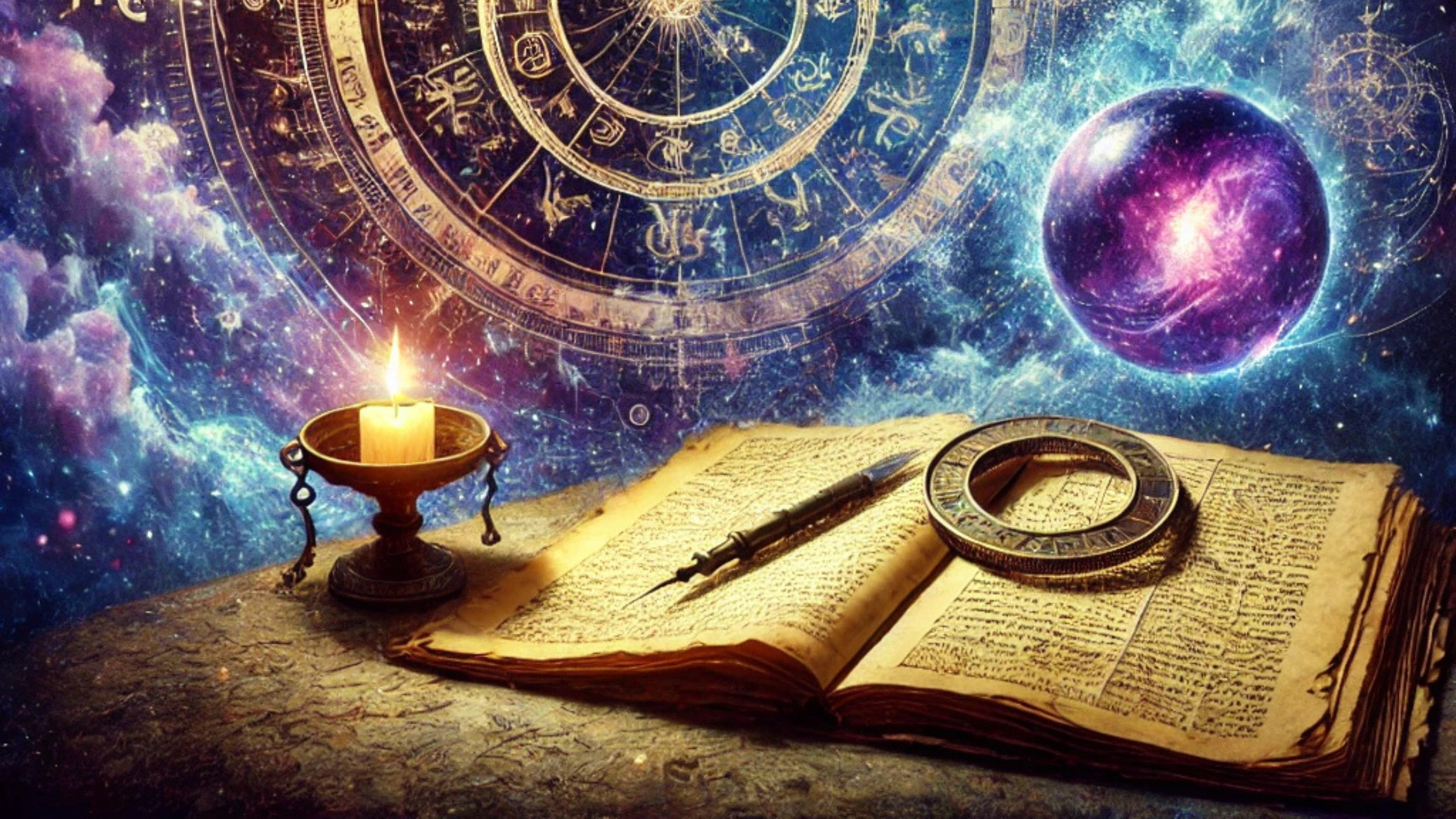

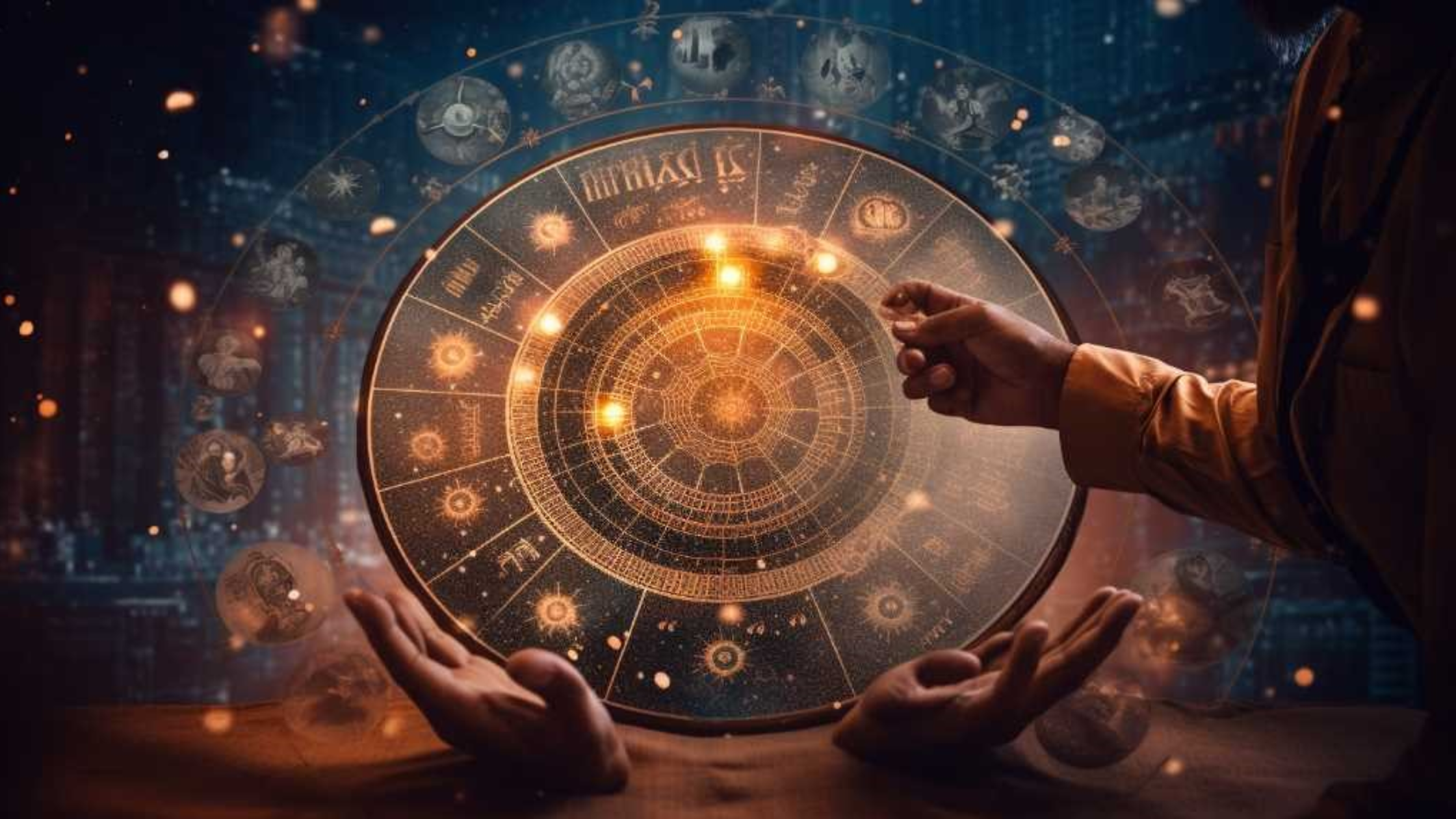
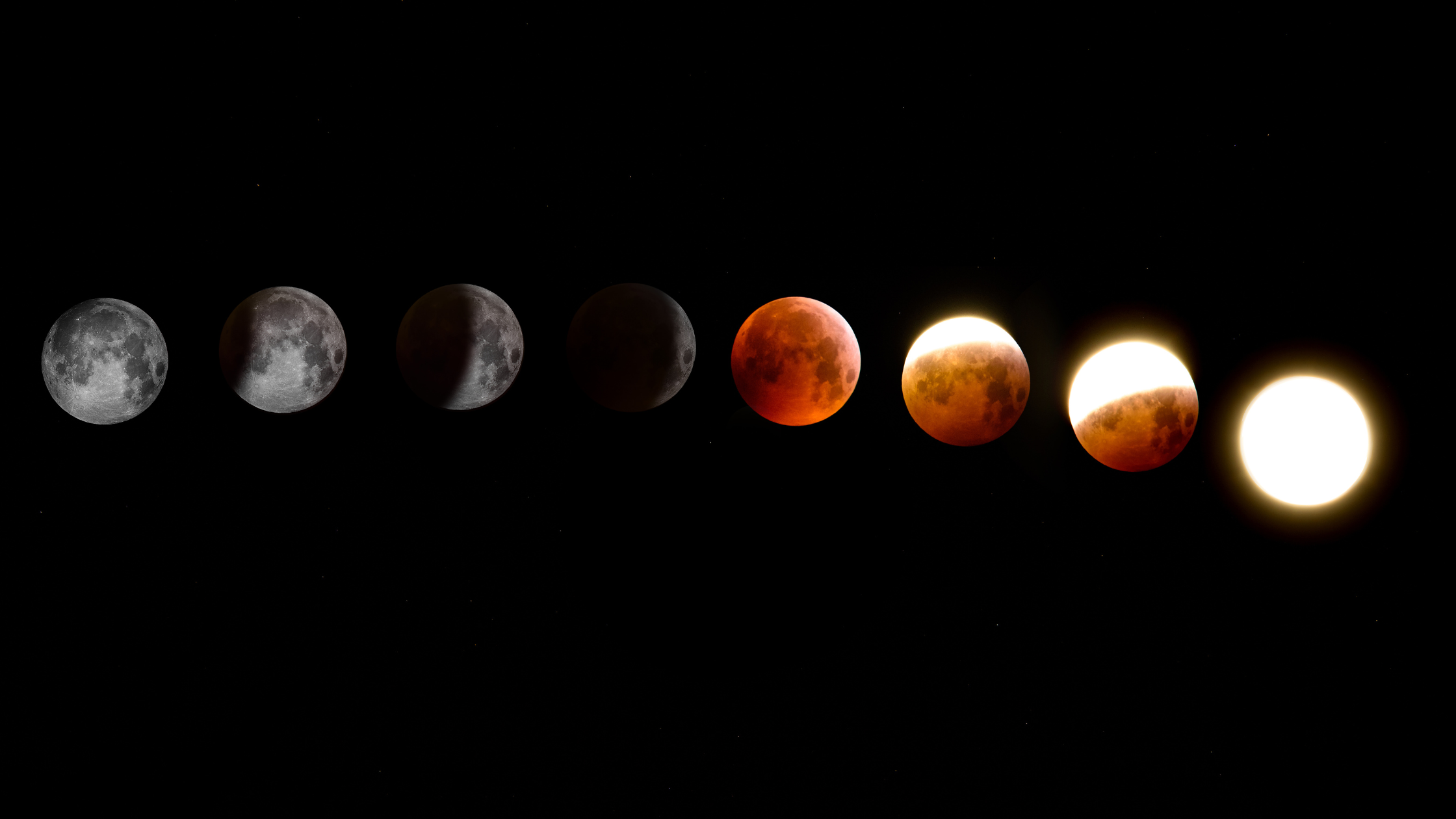
Leave a Reply